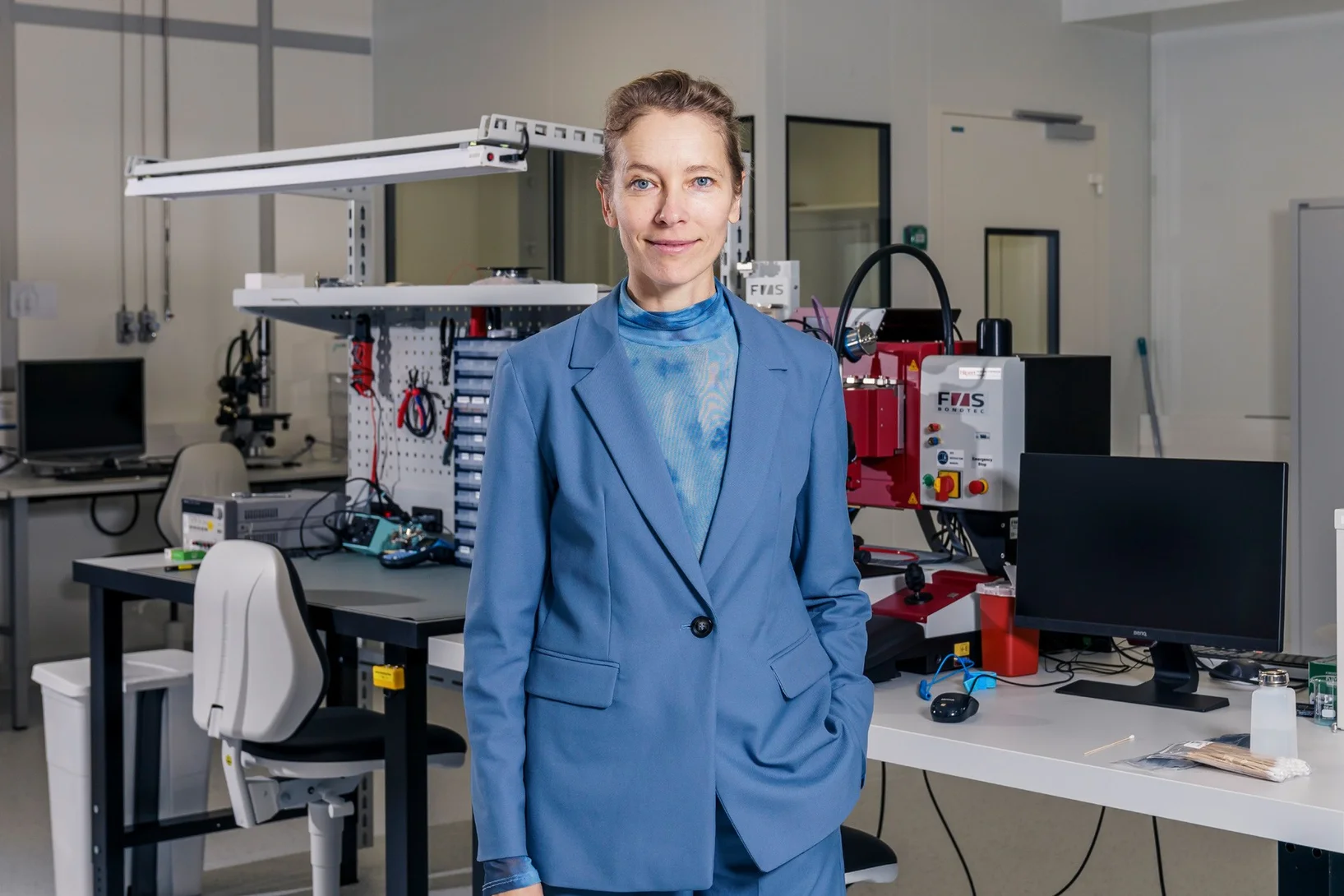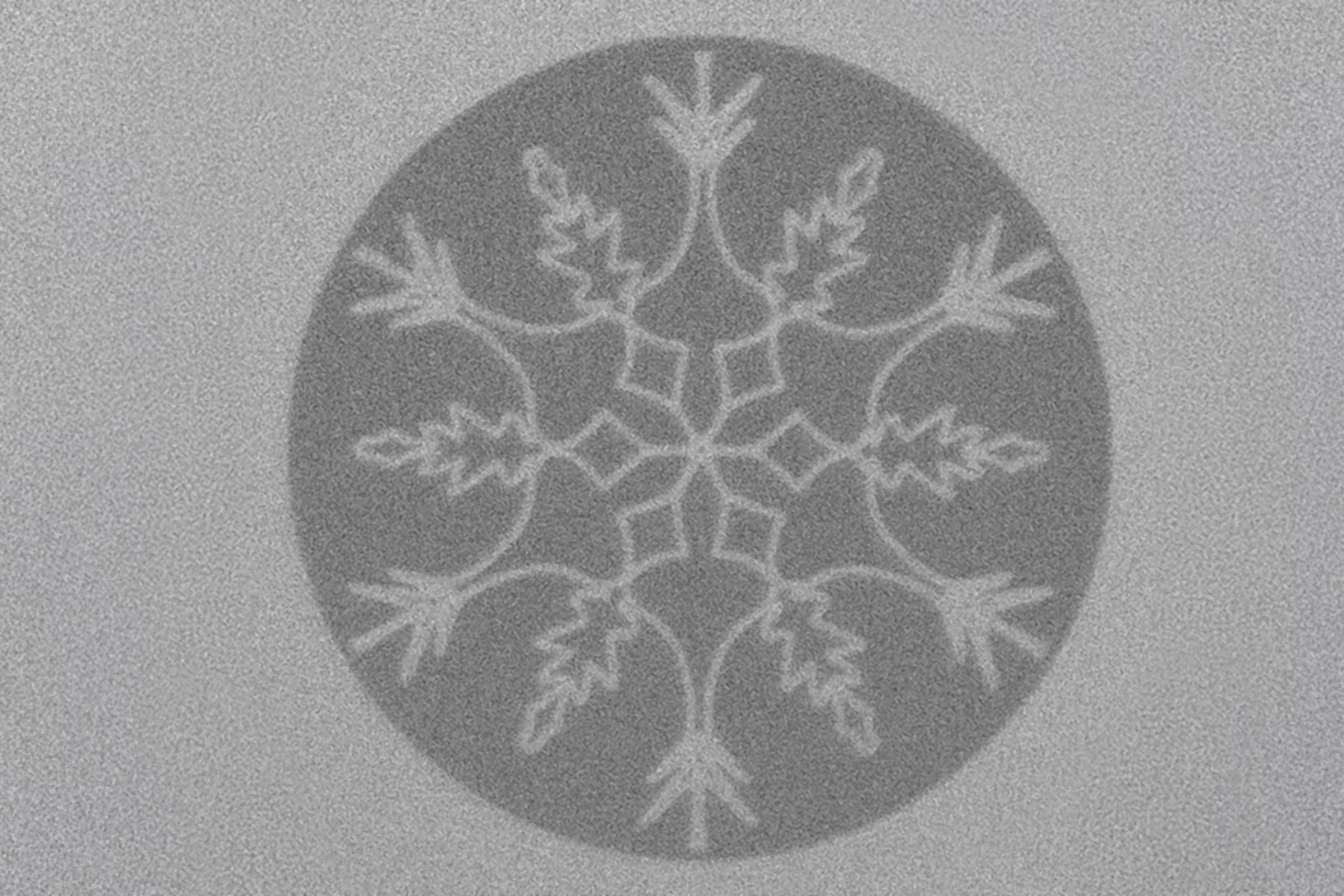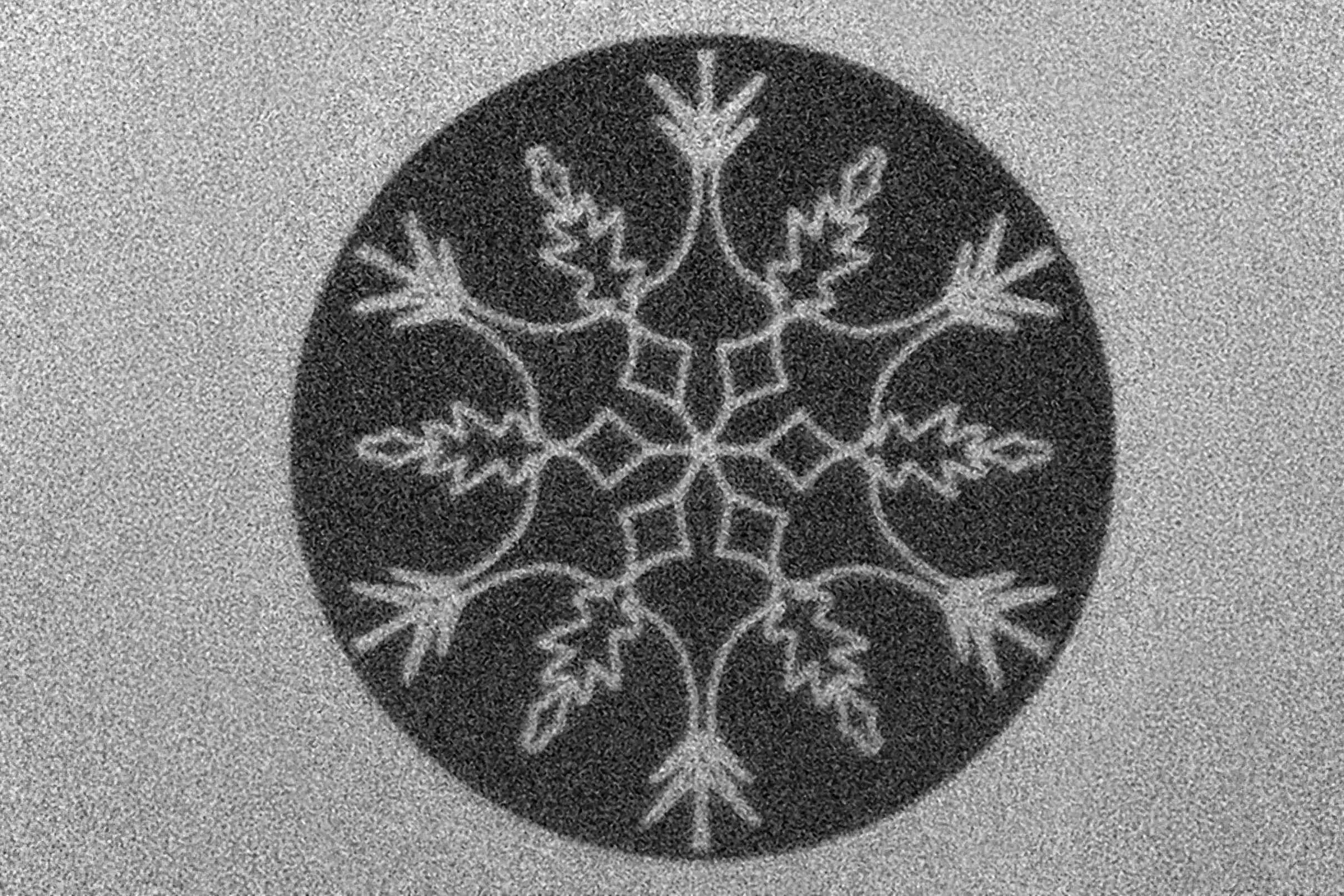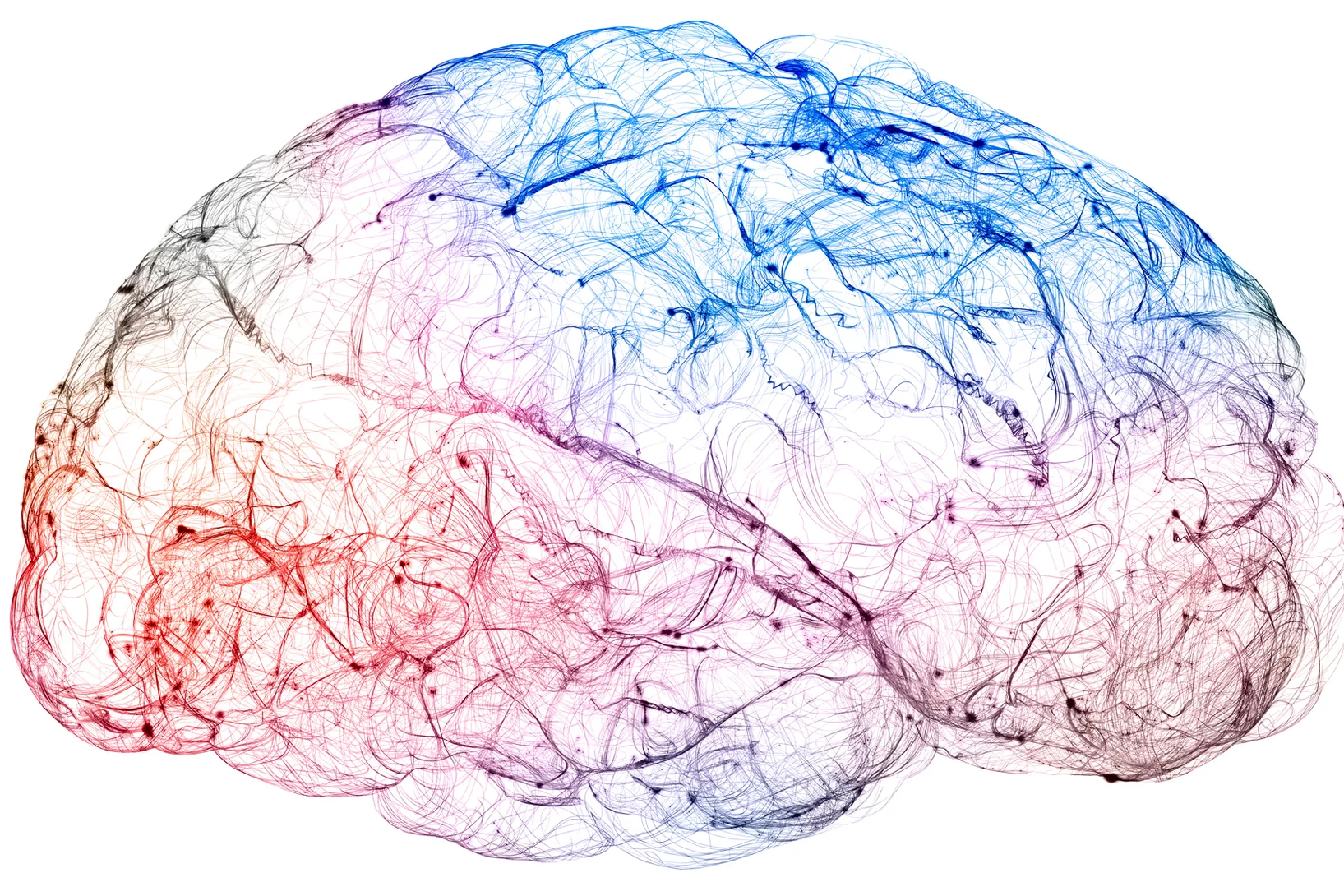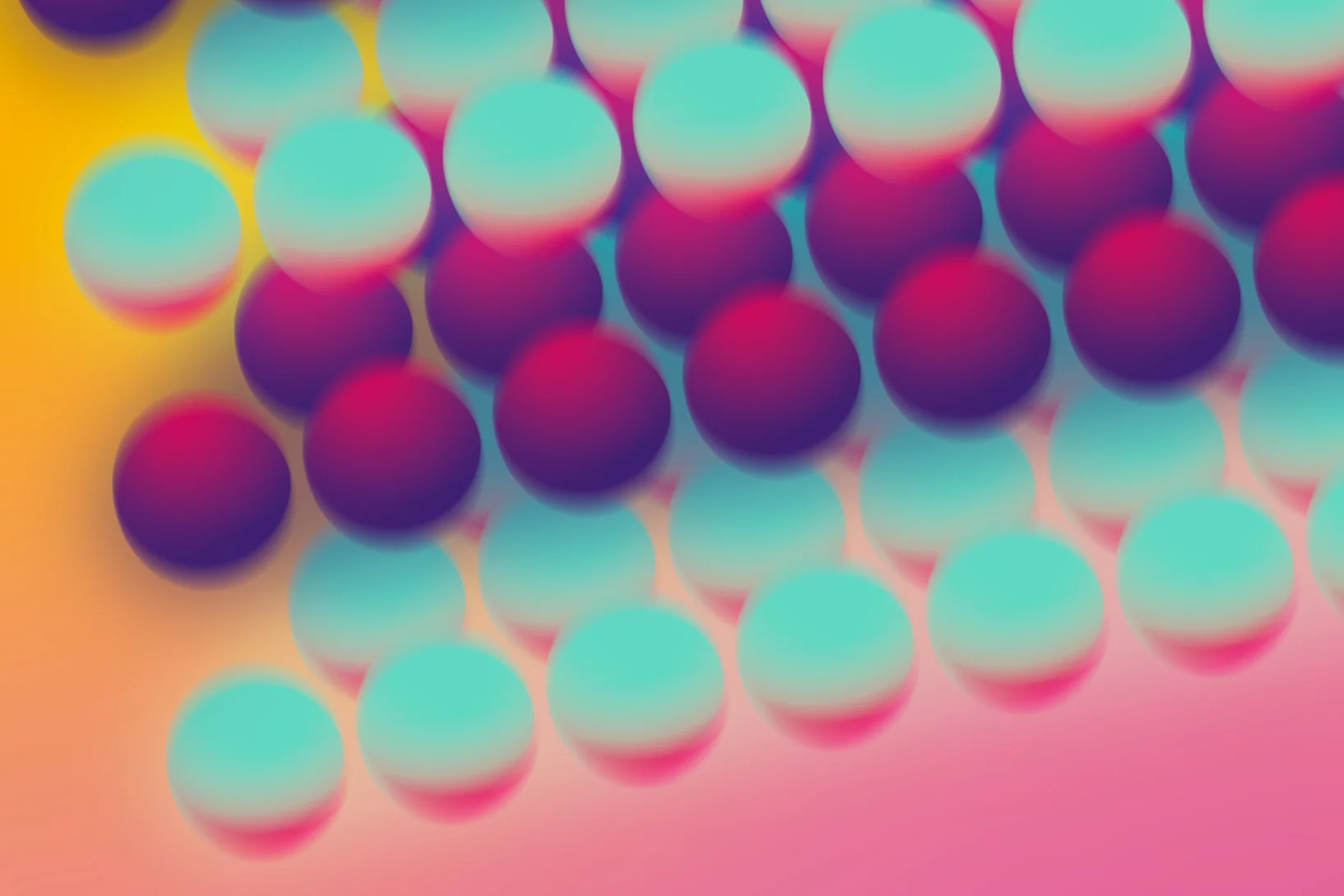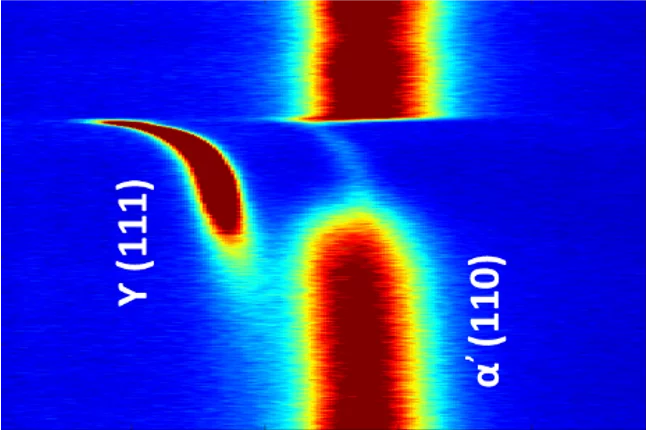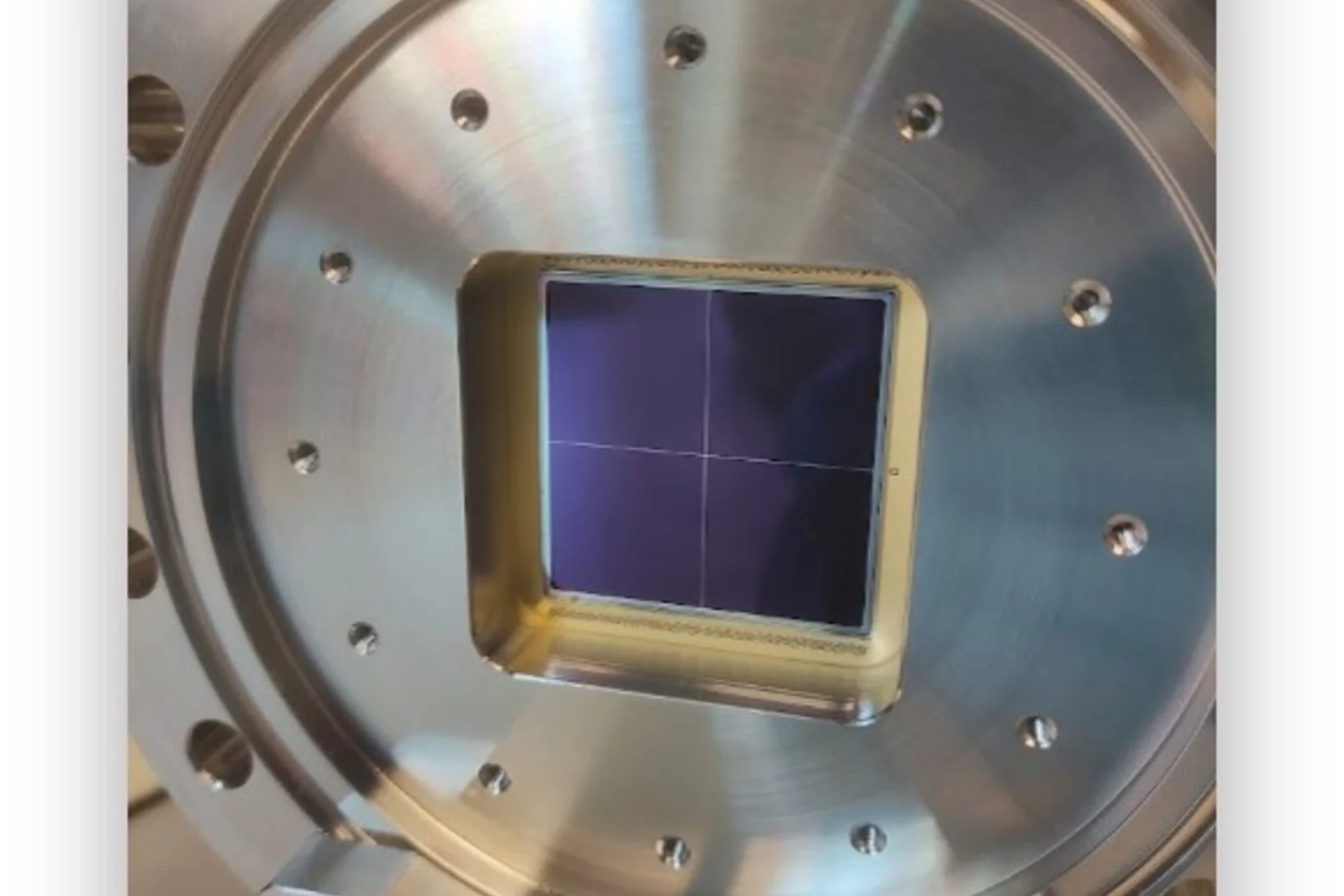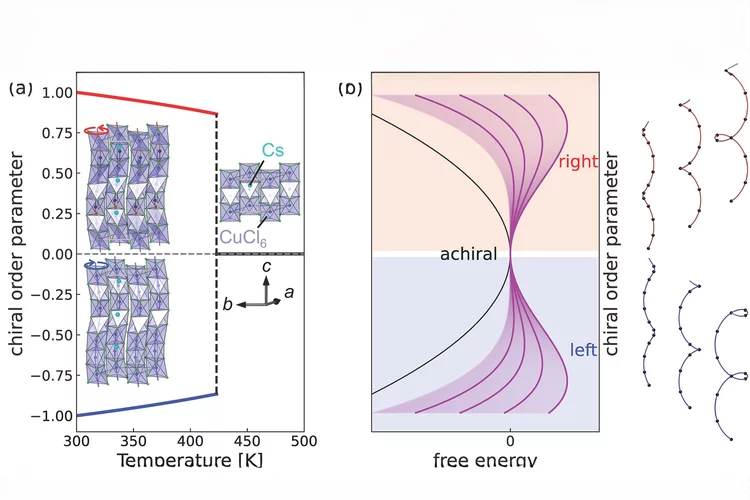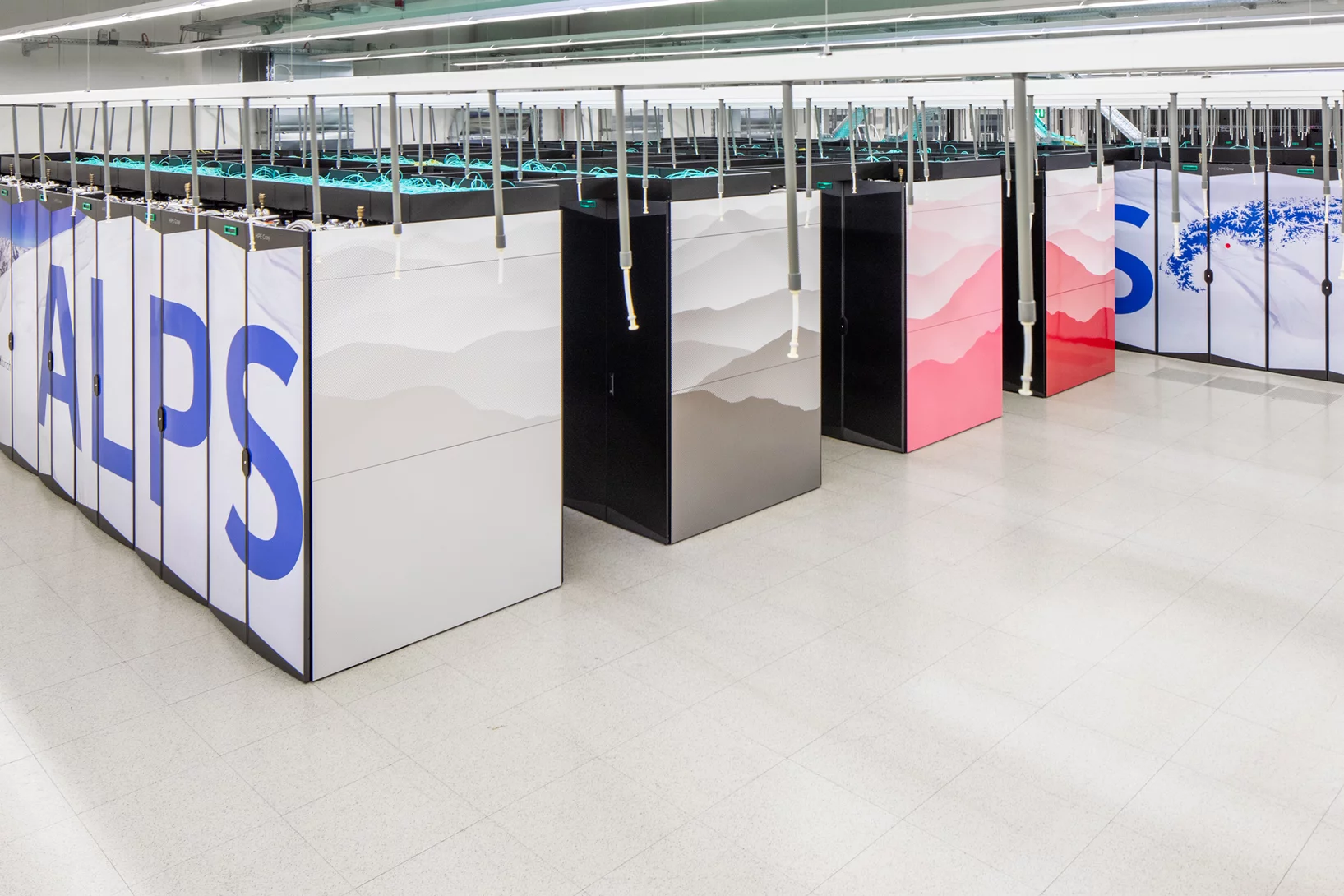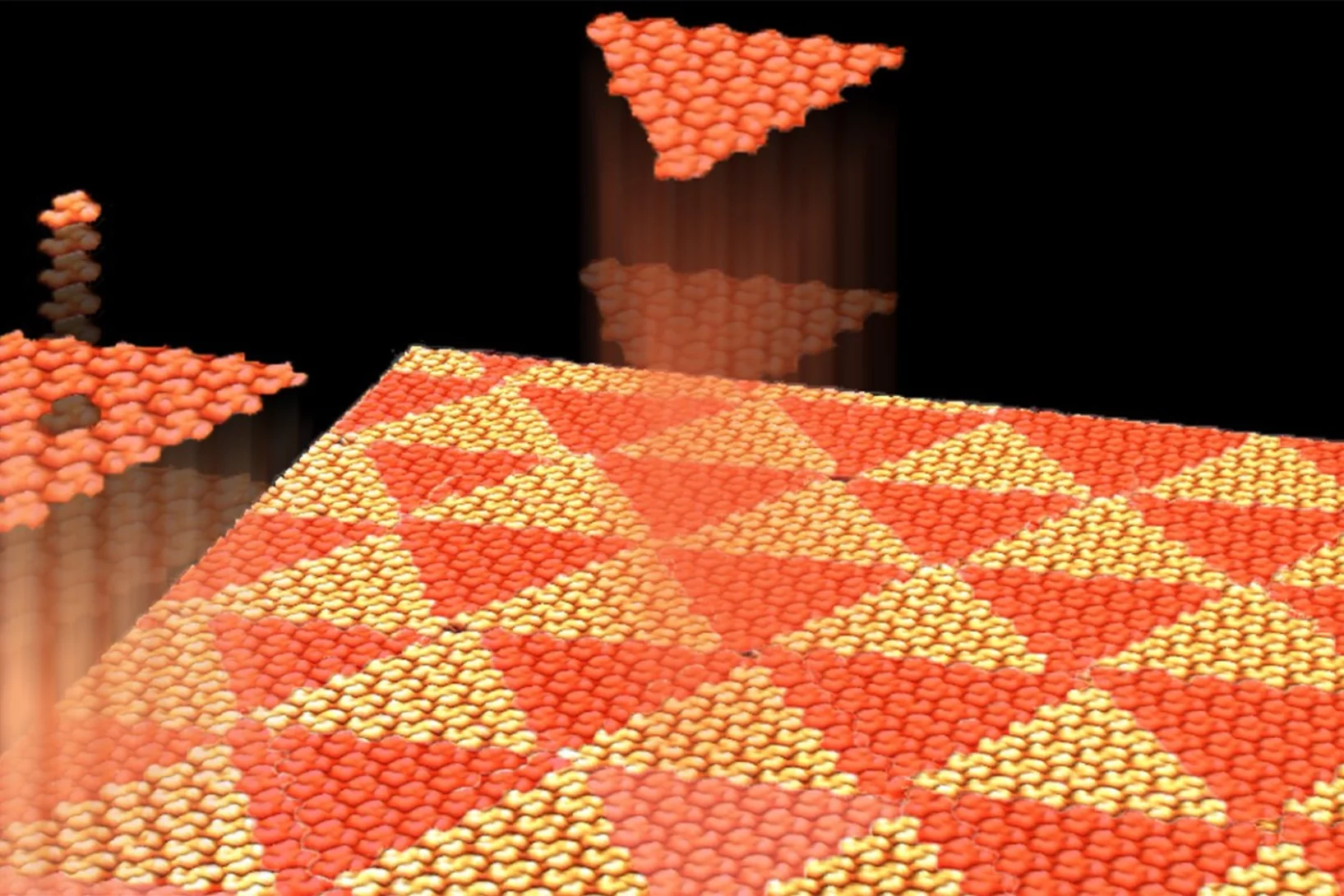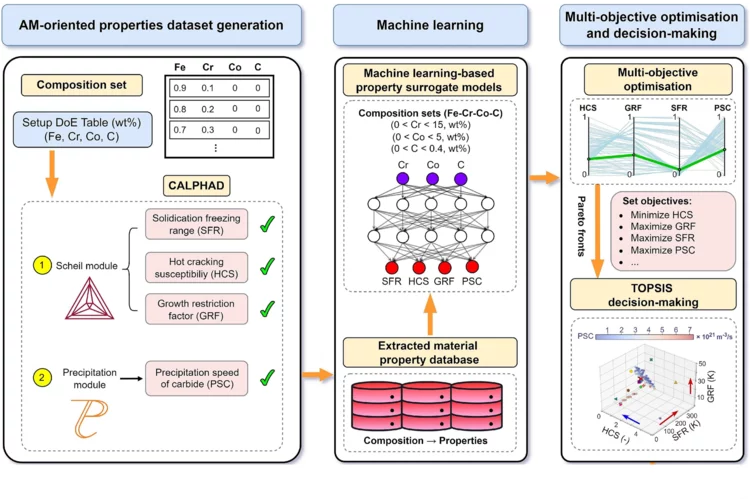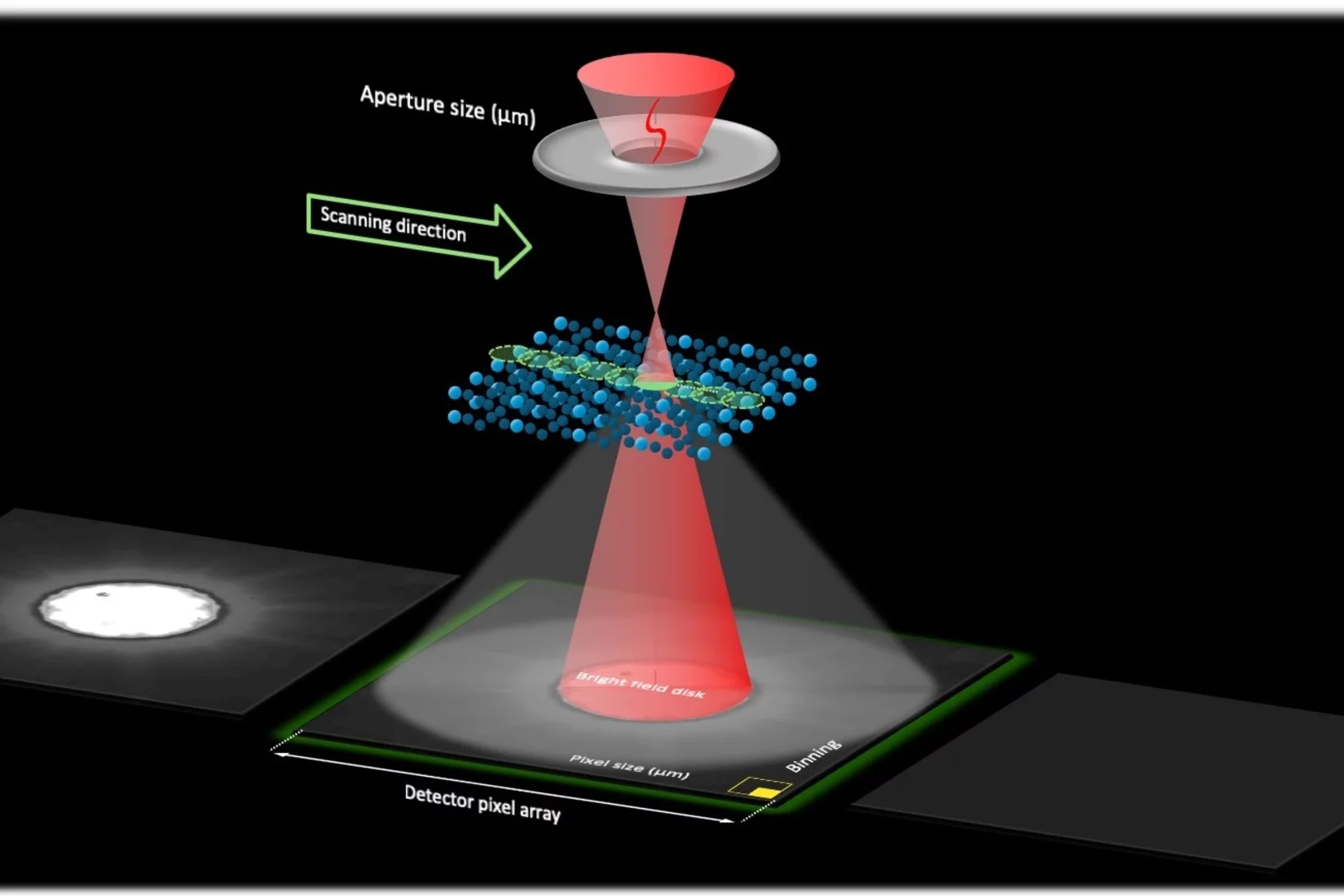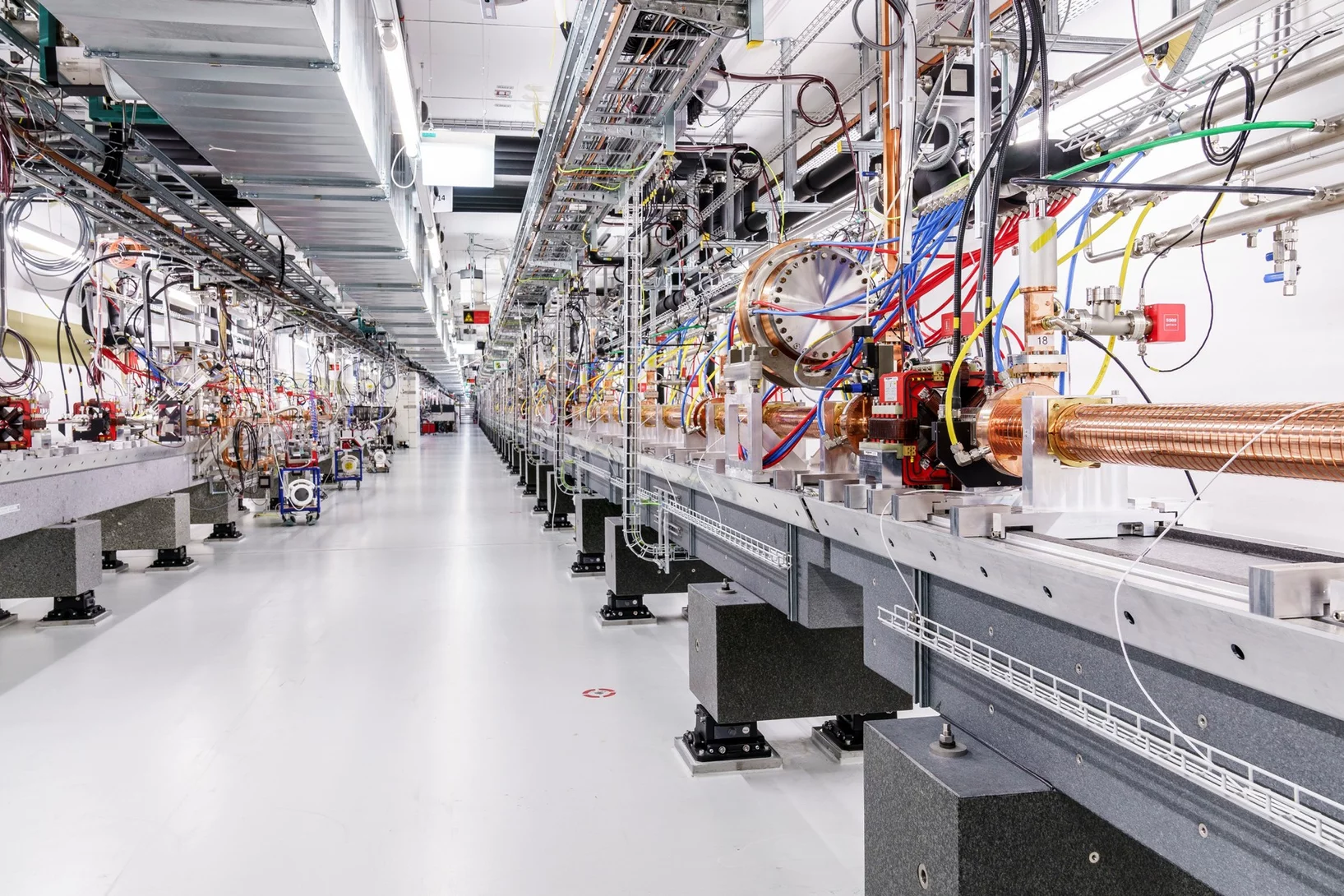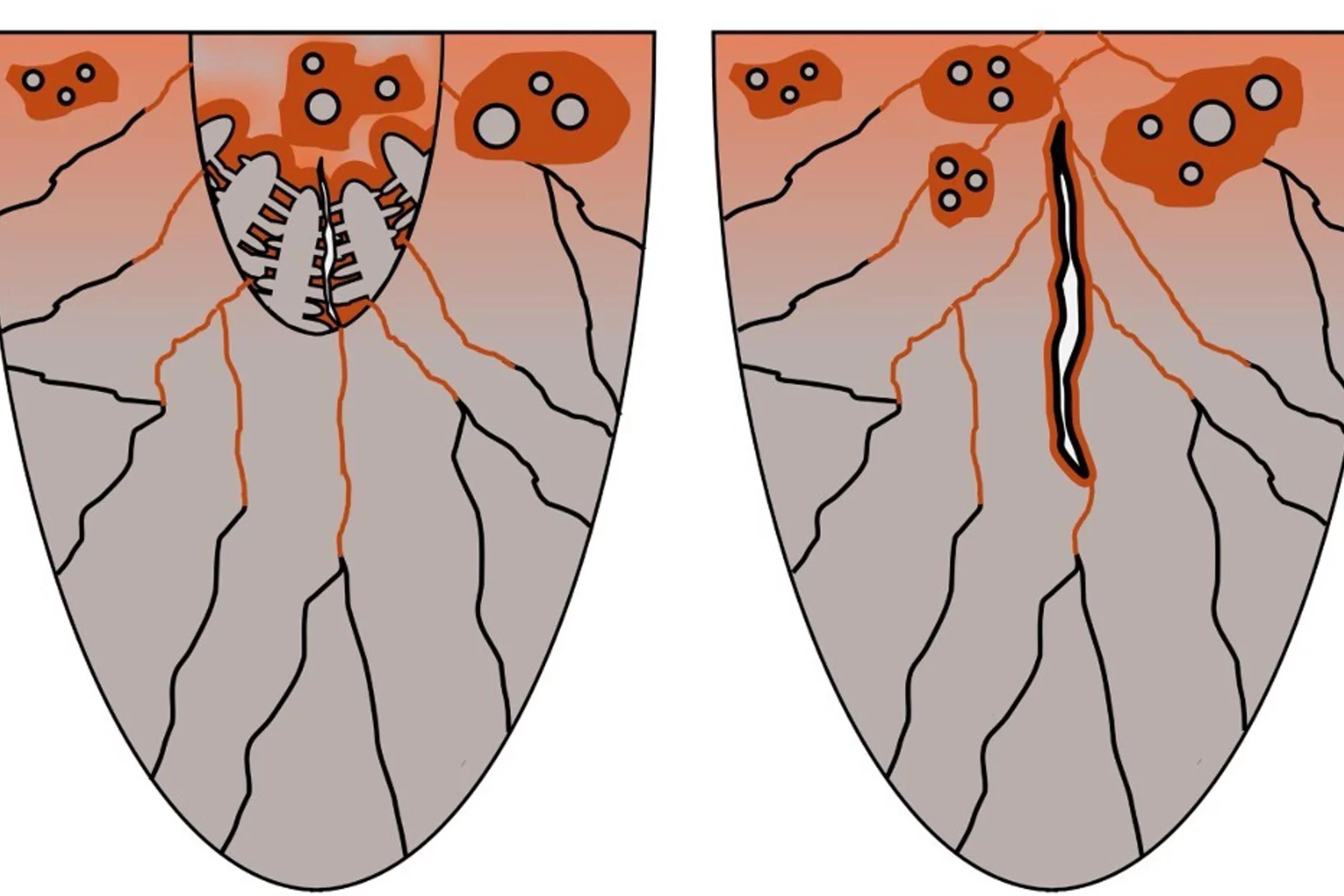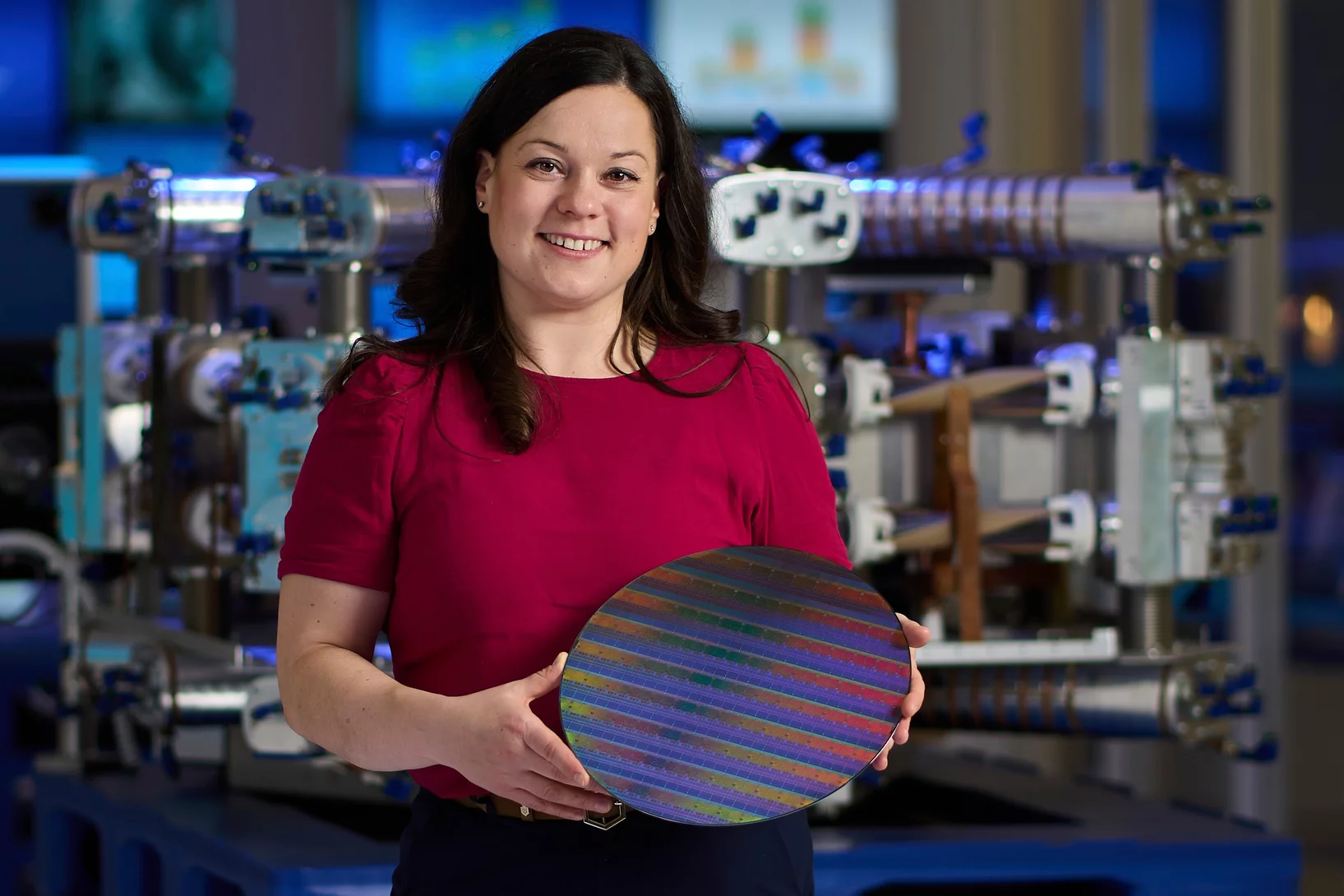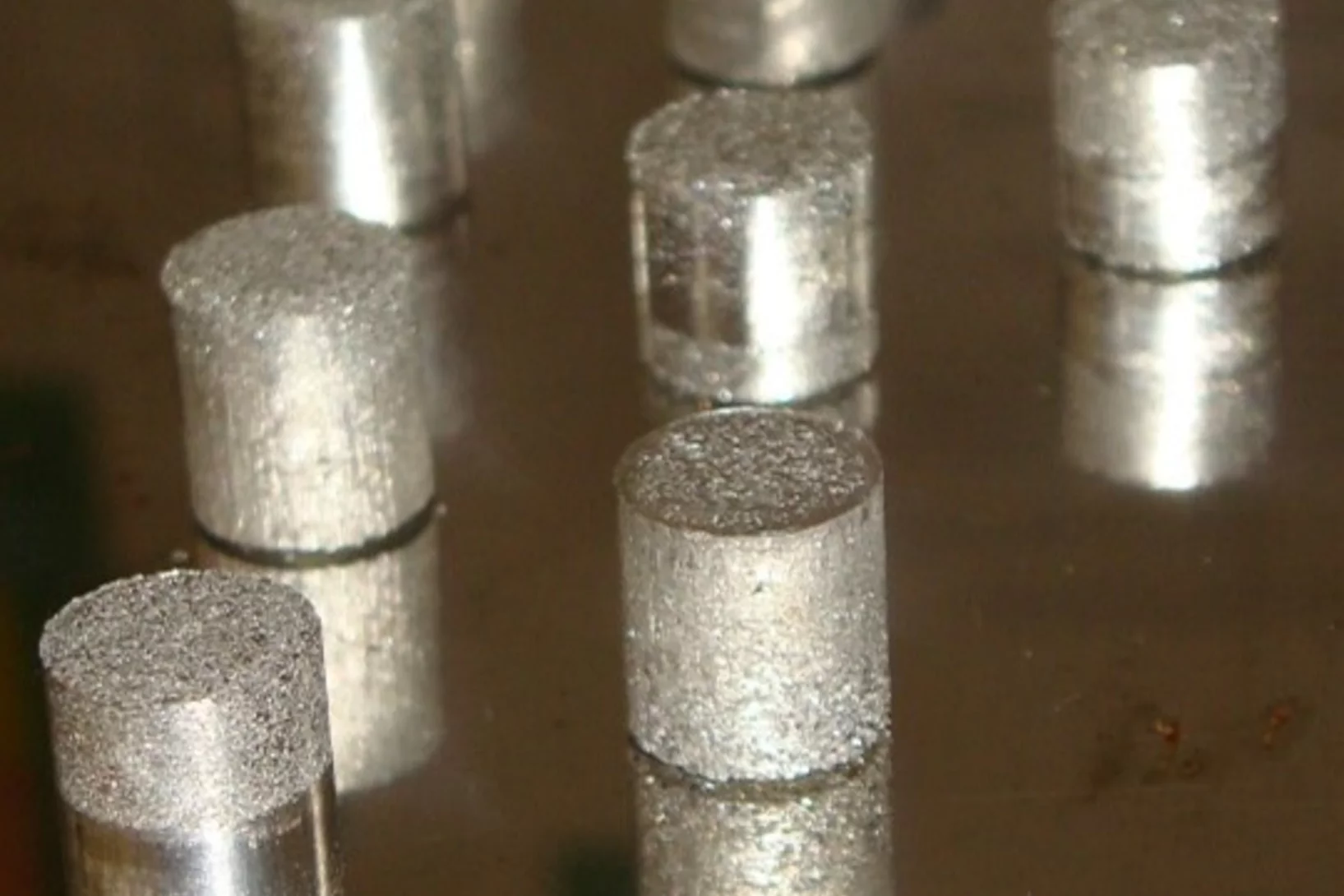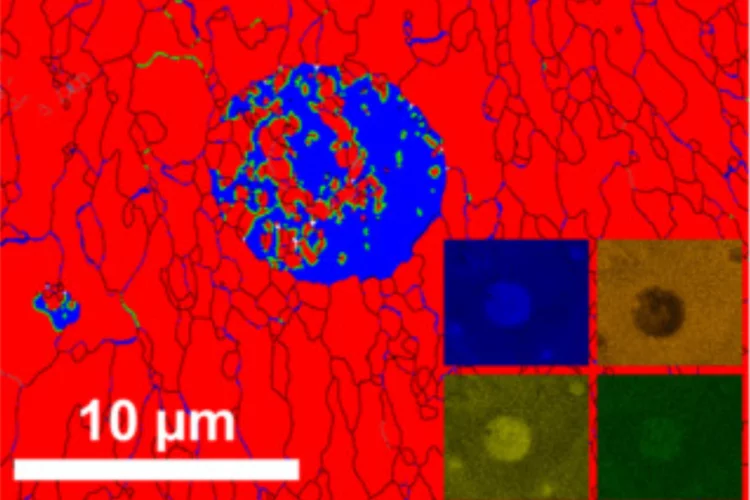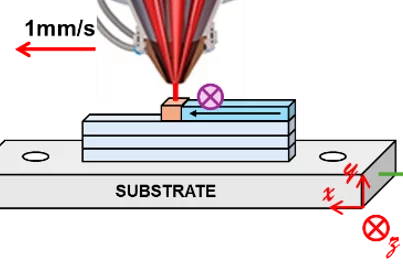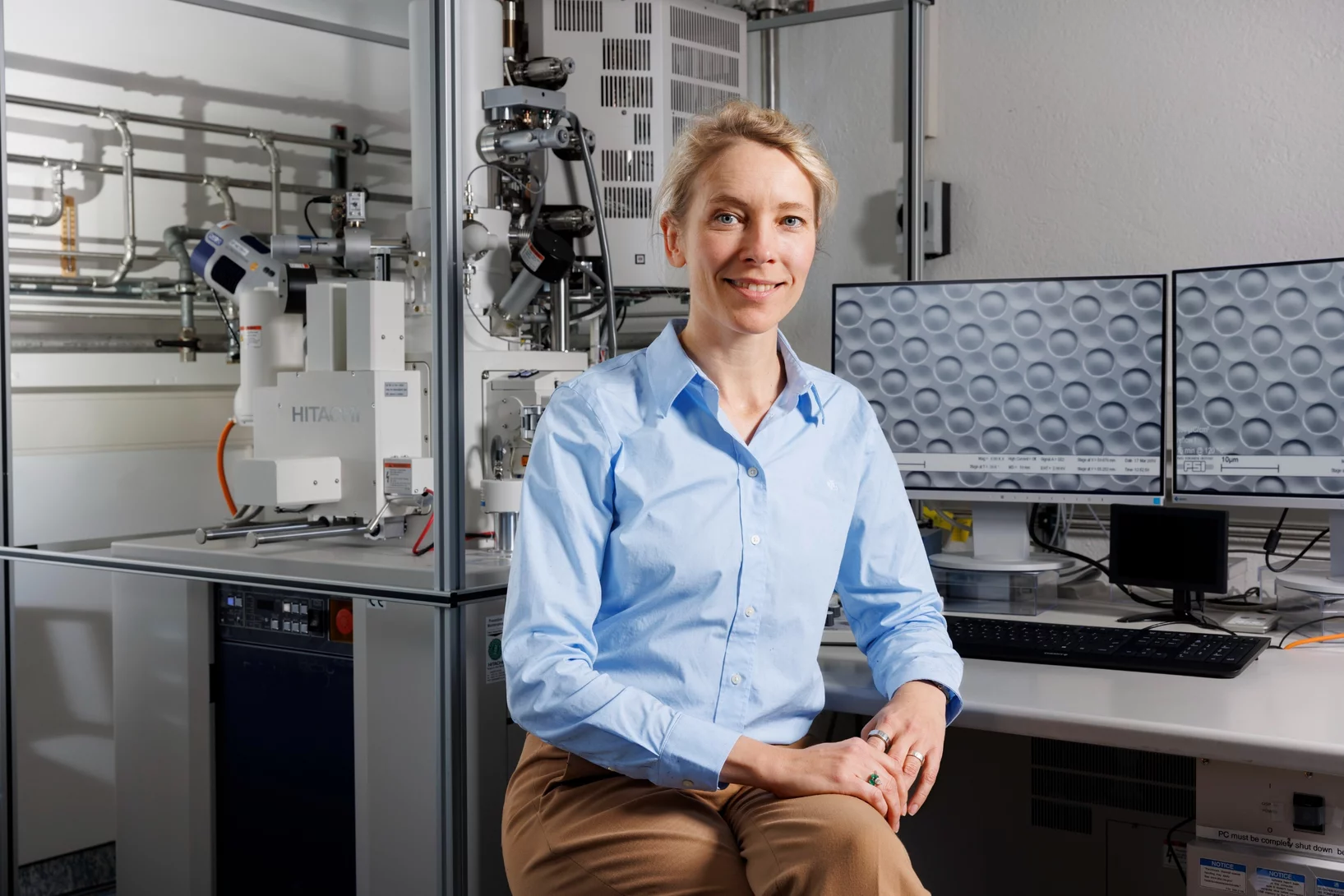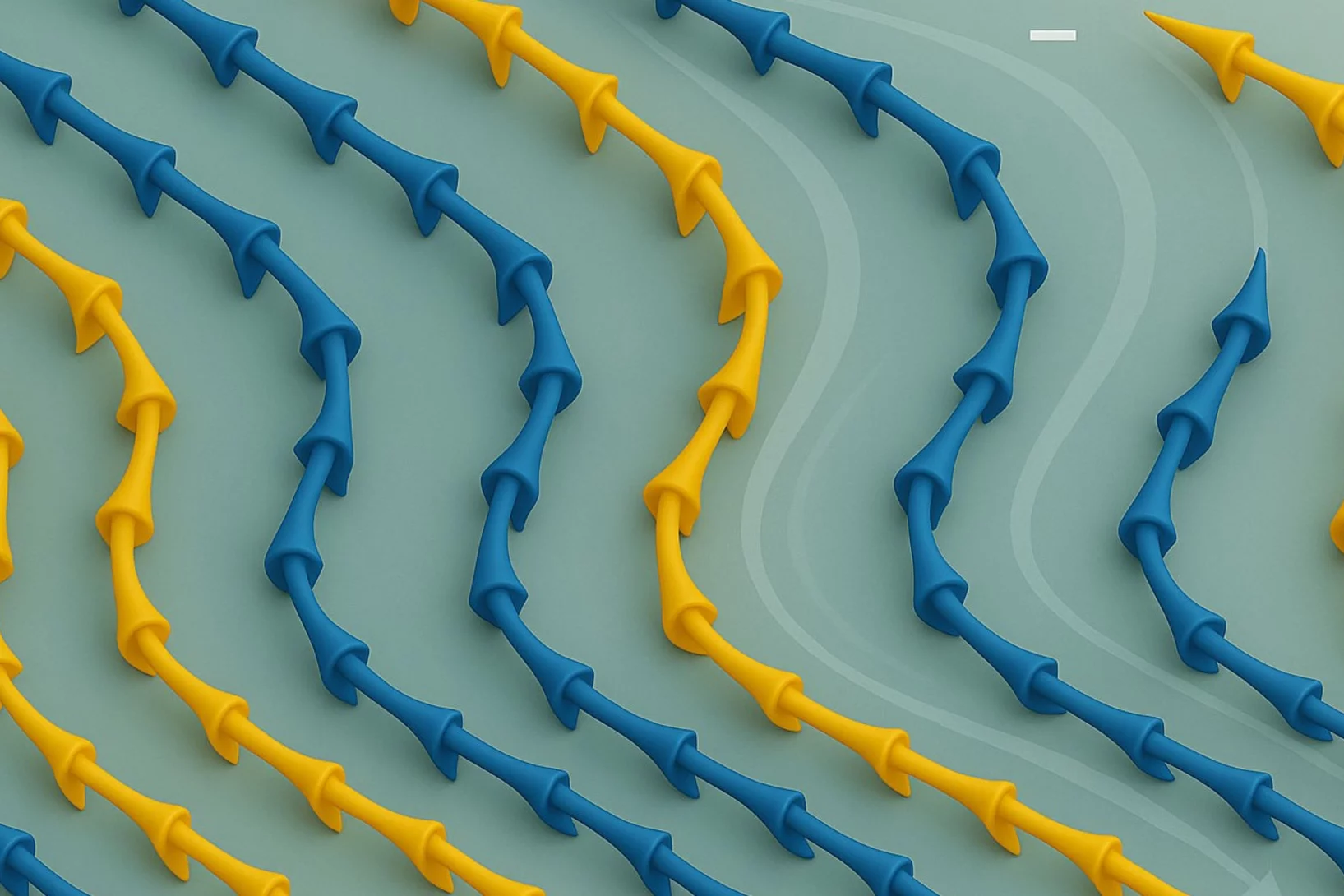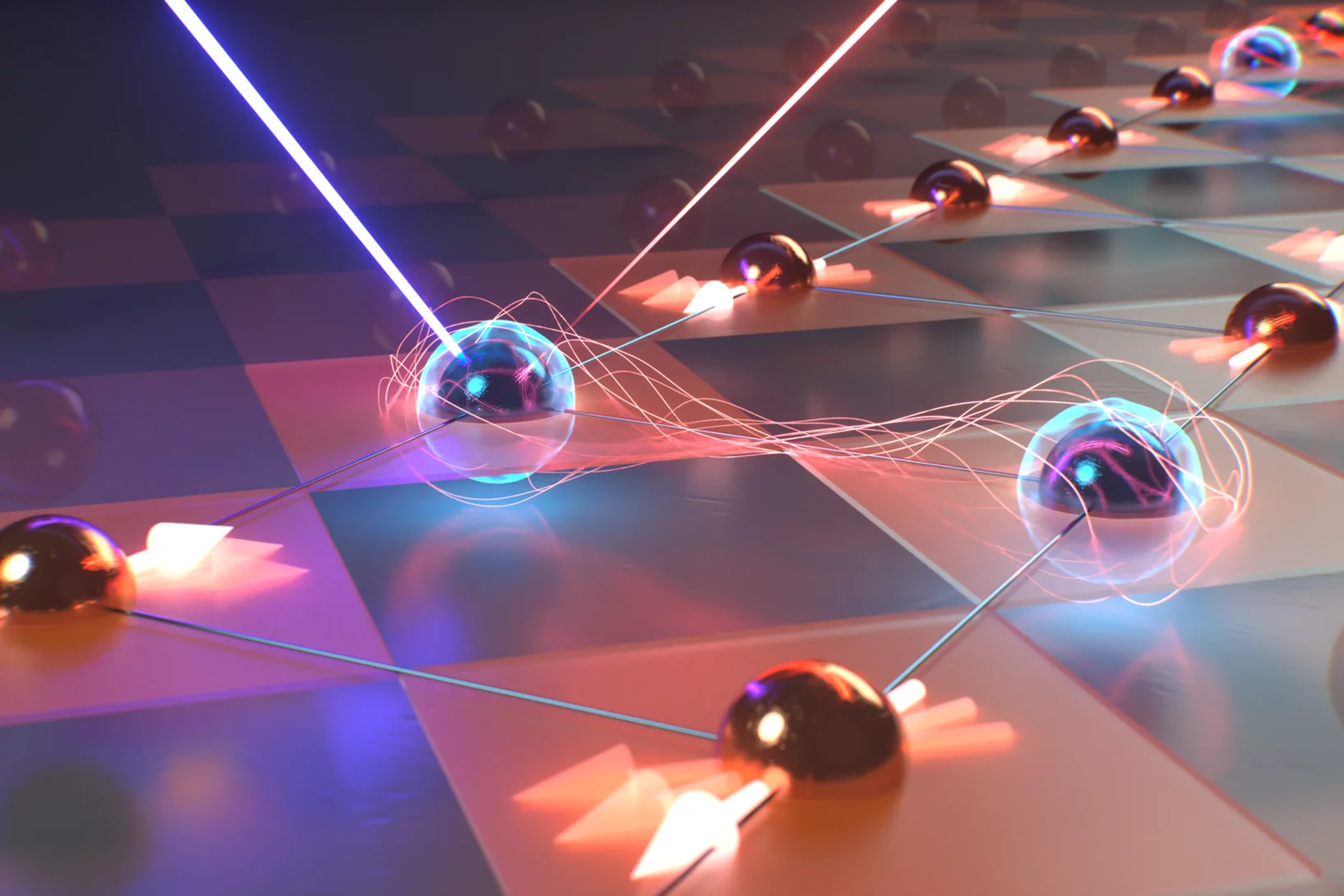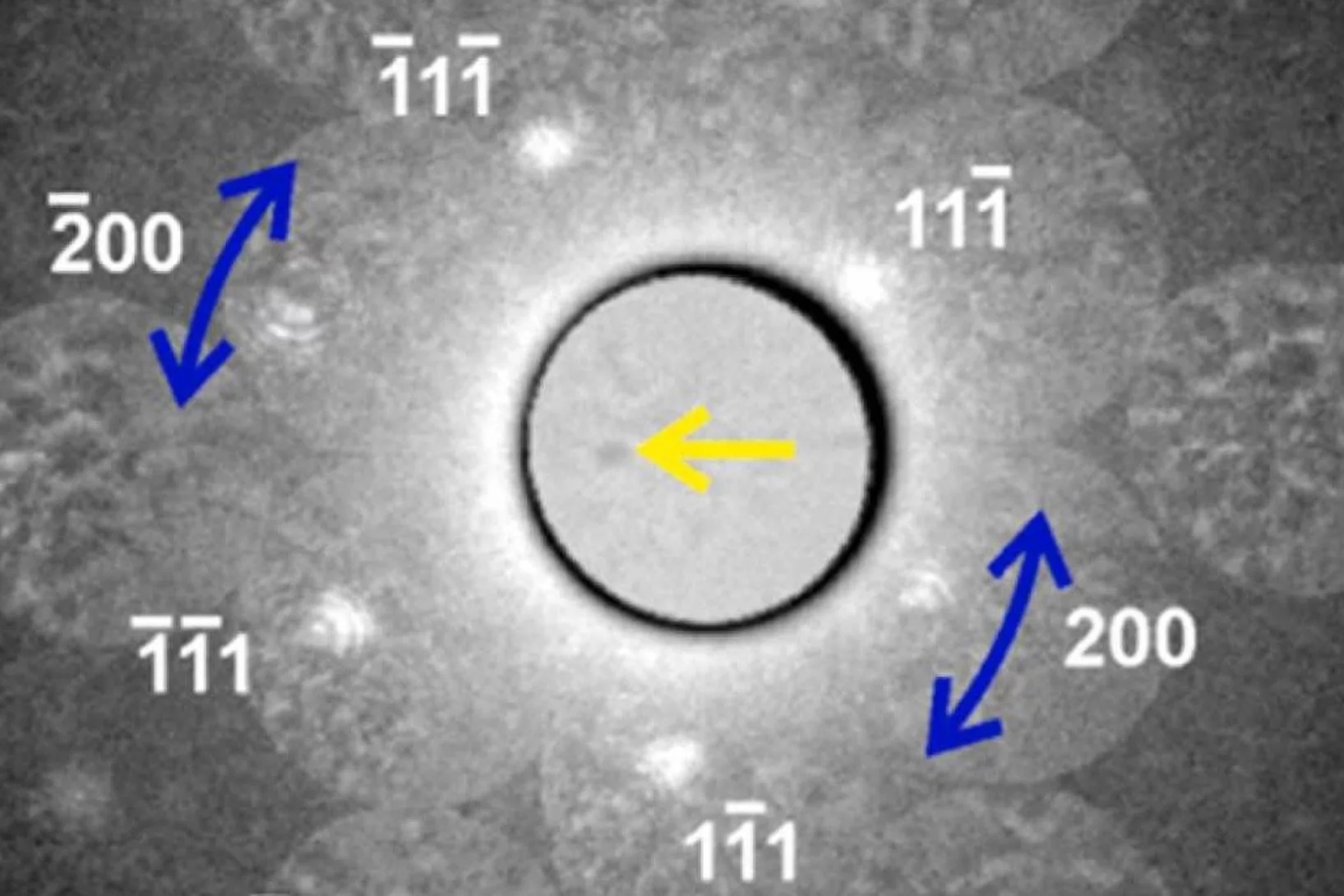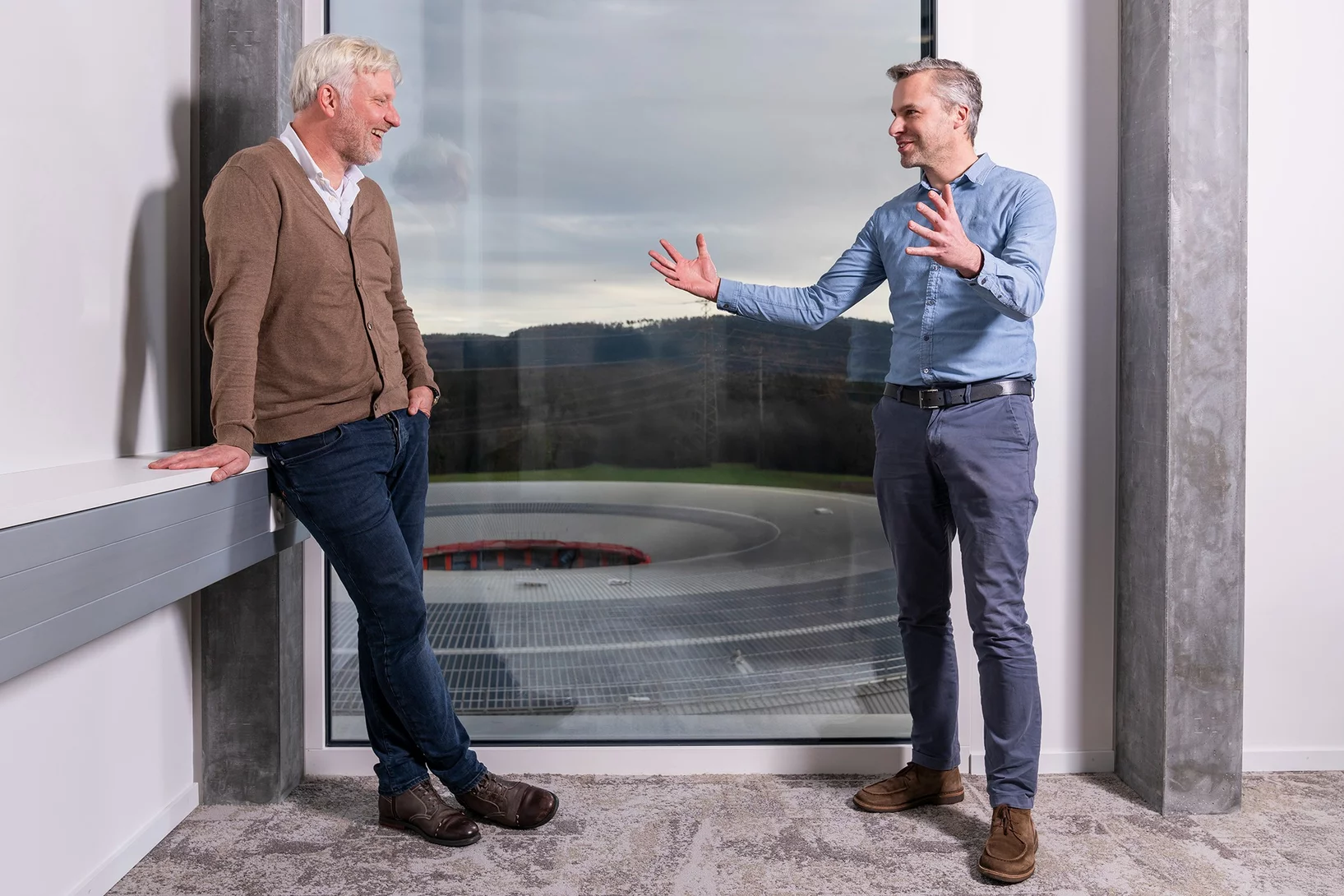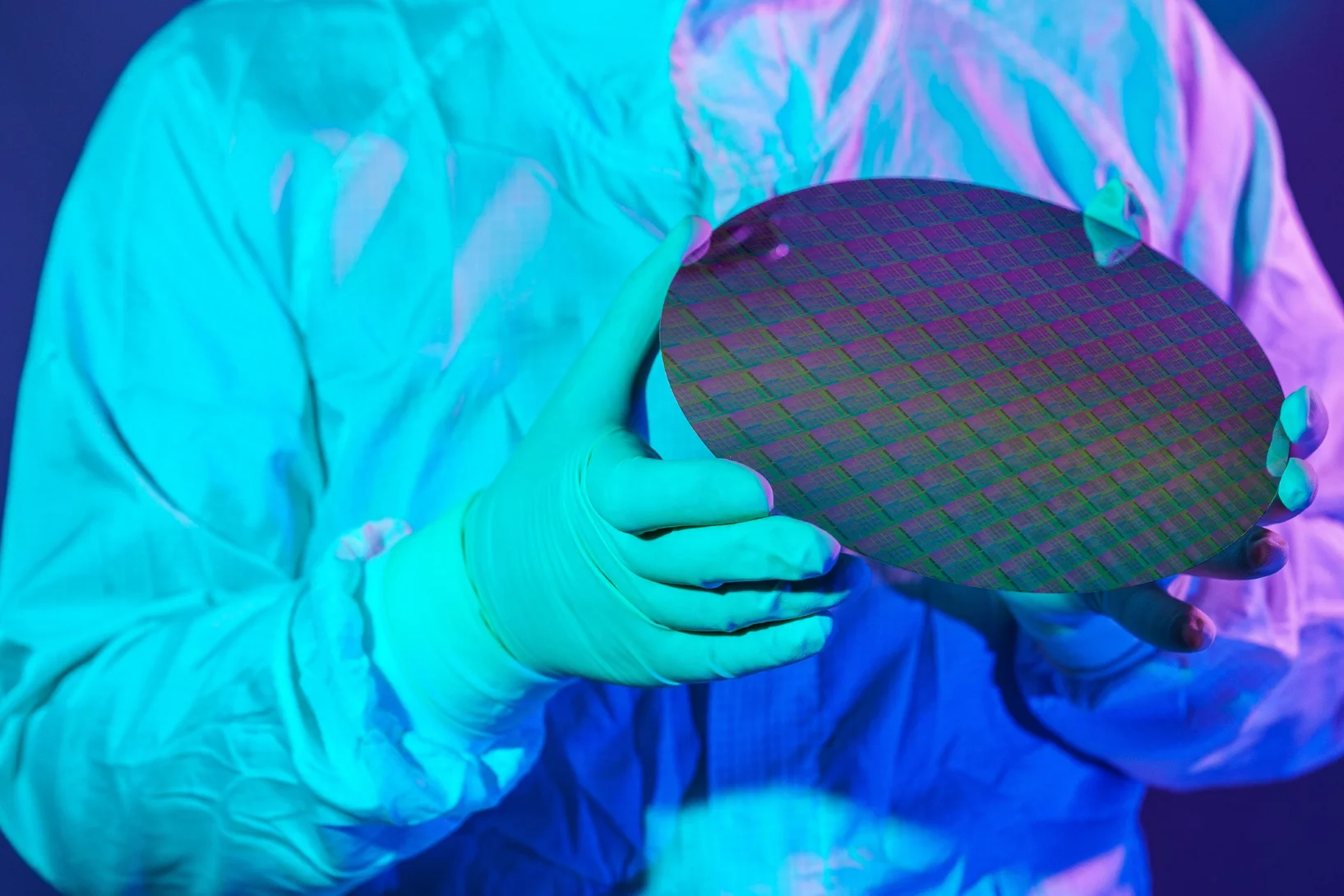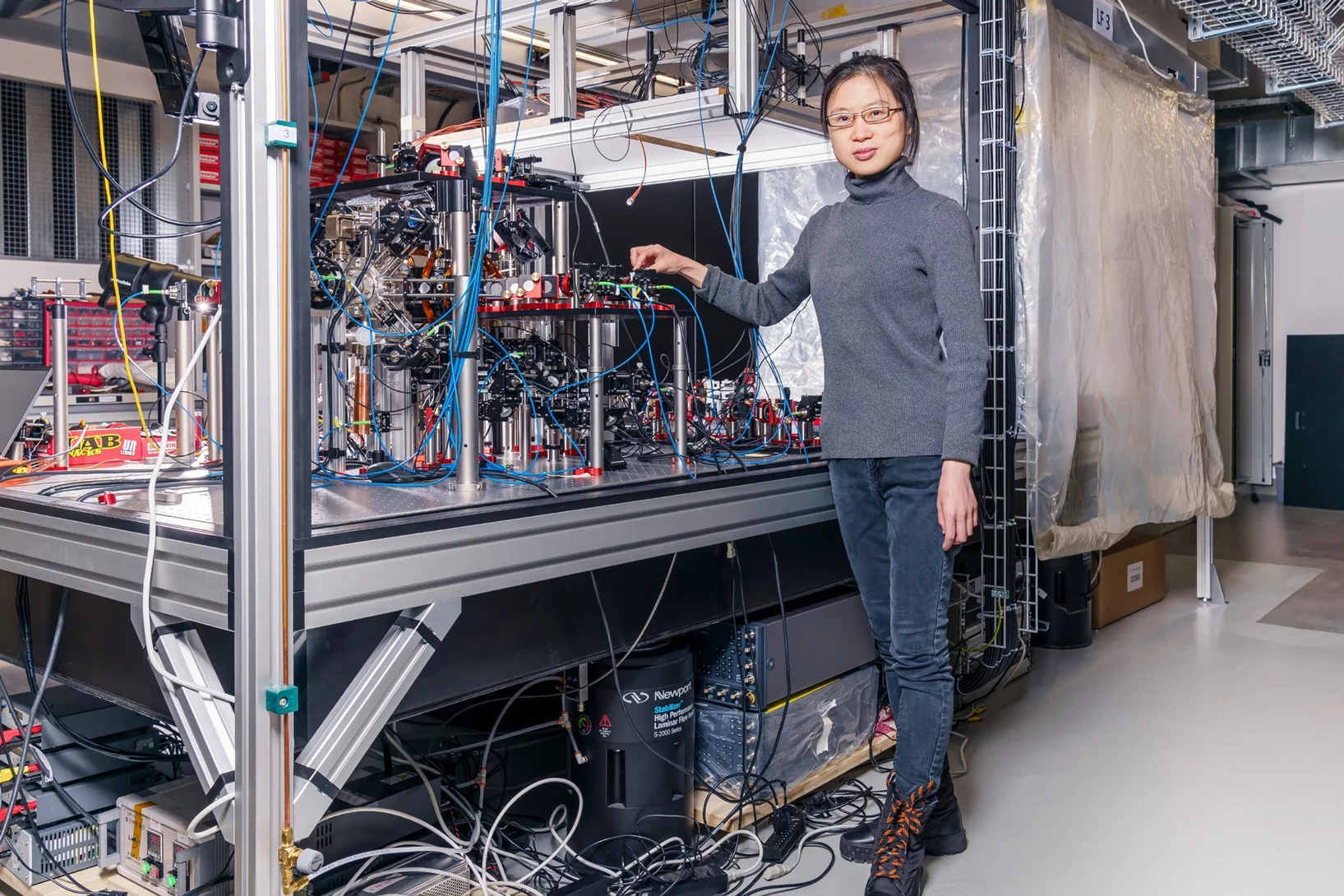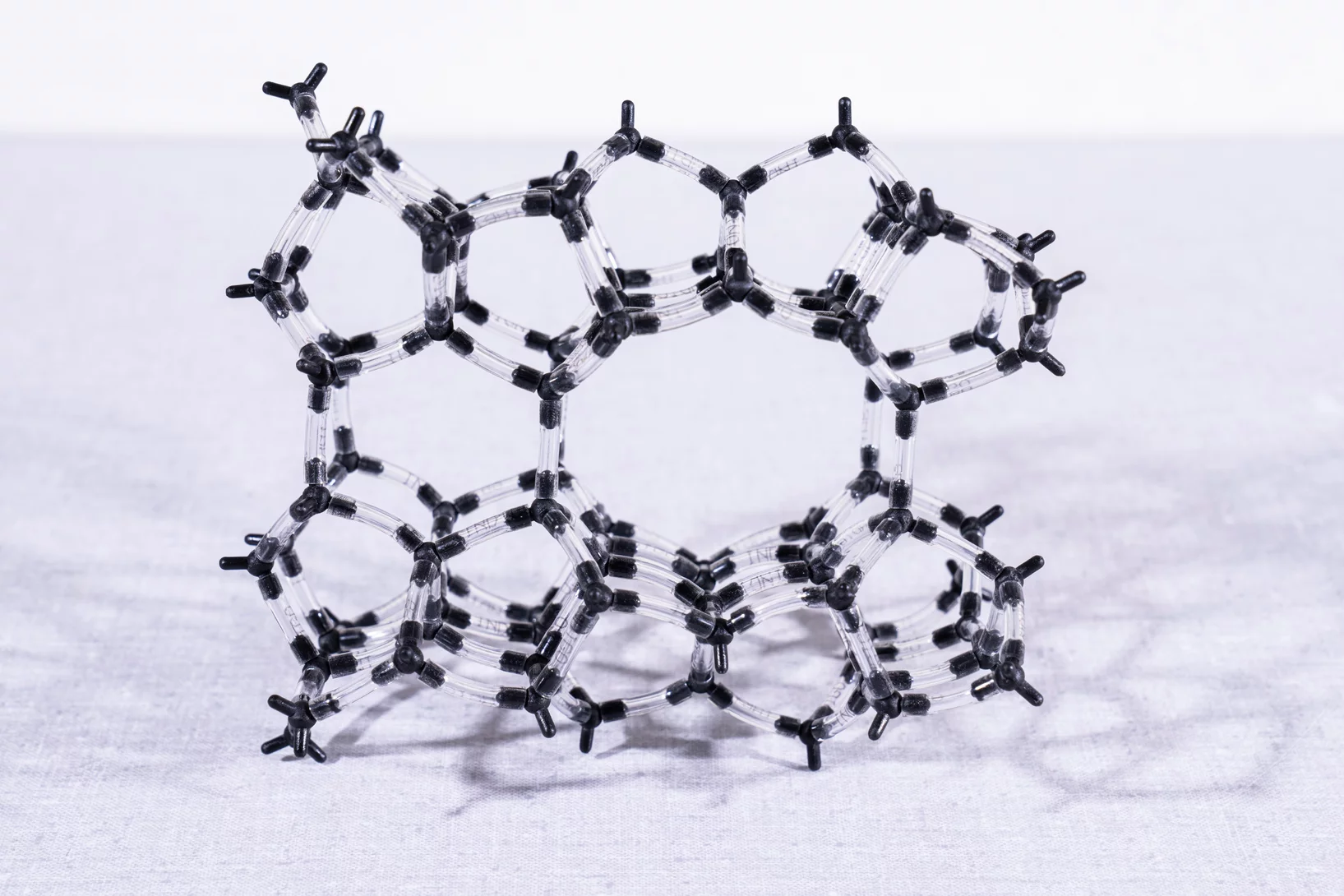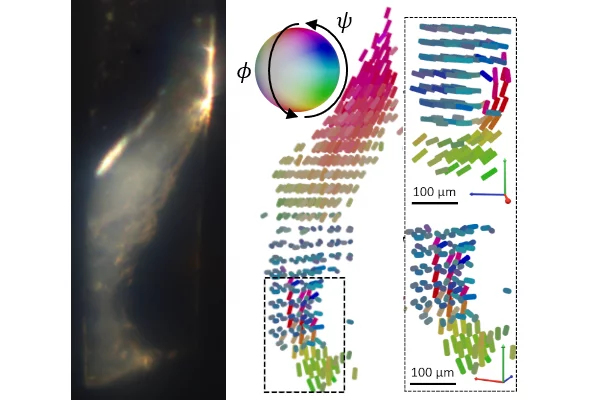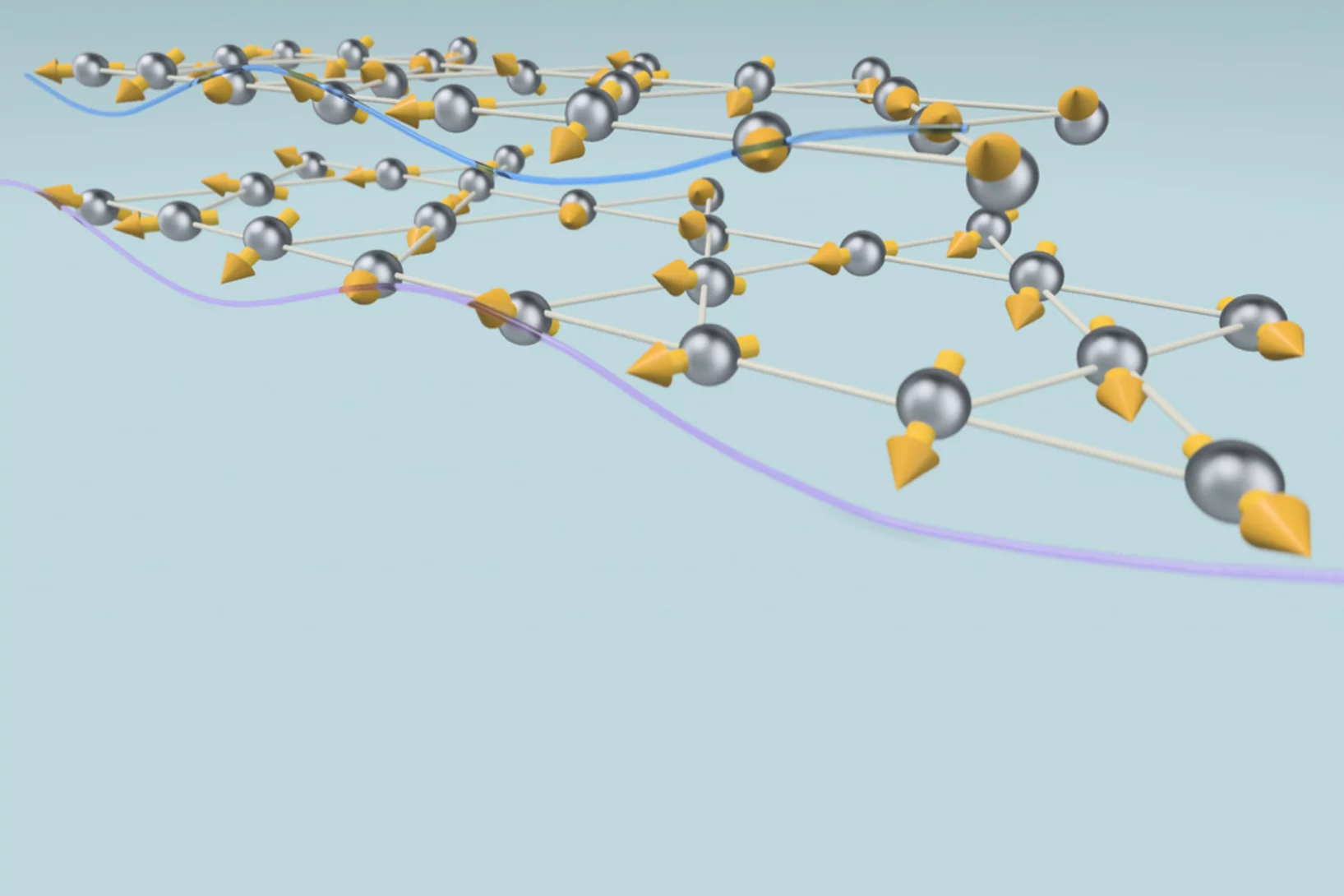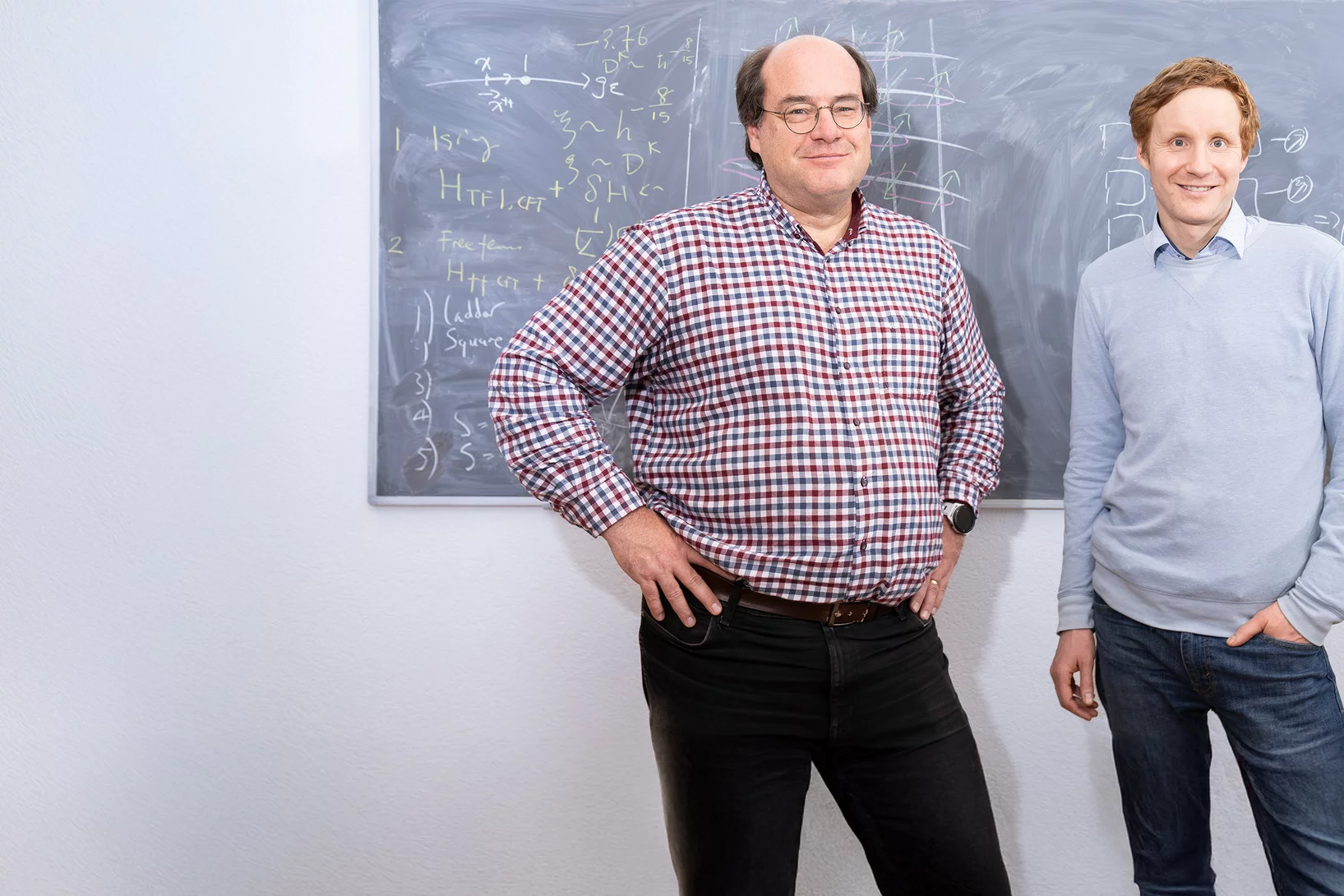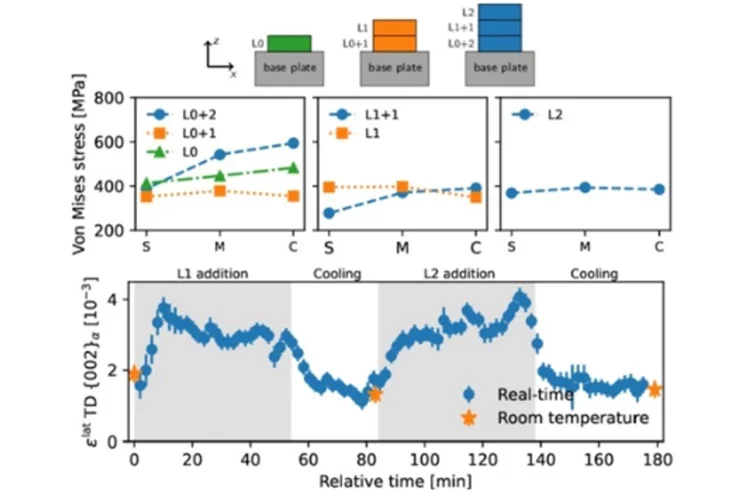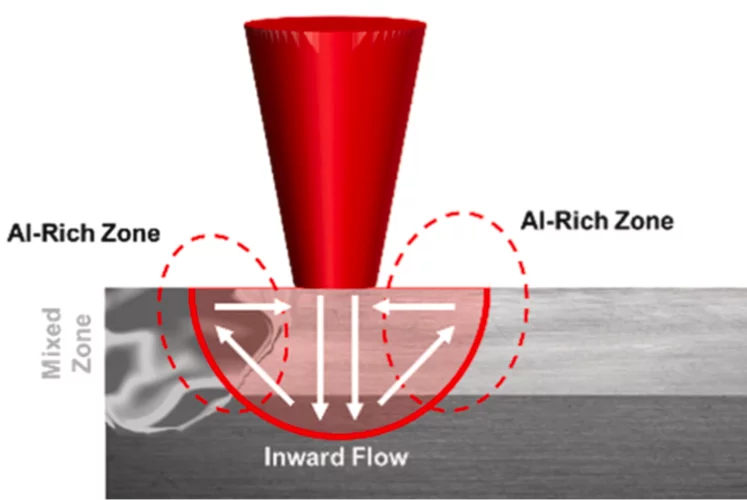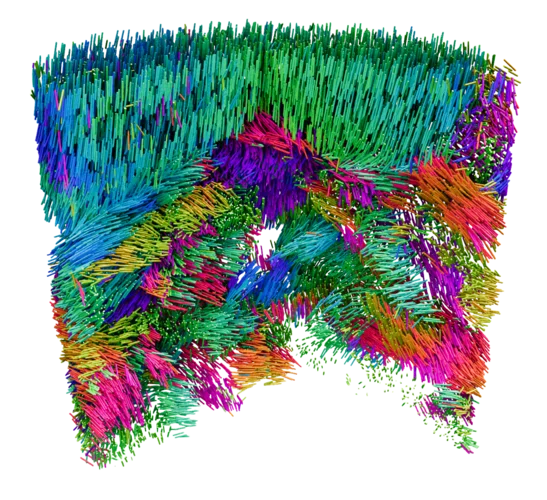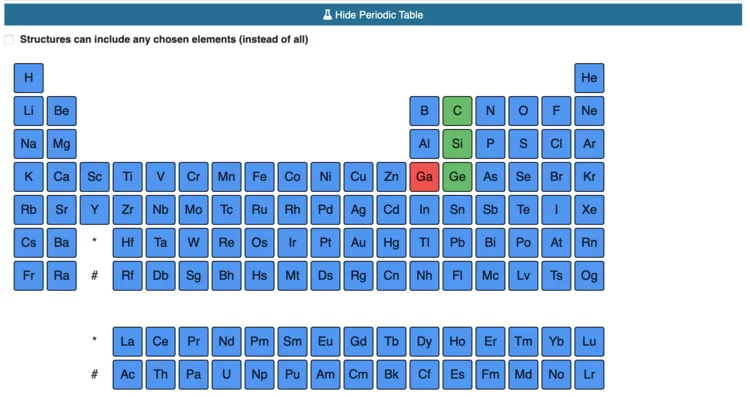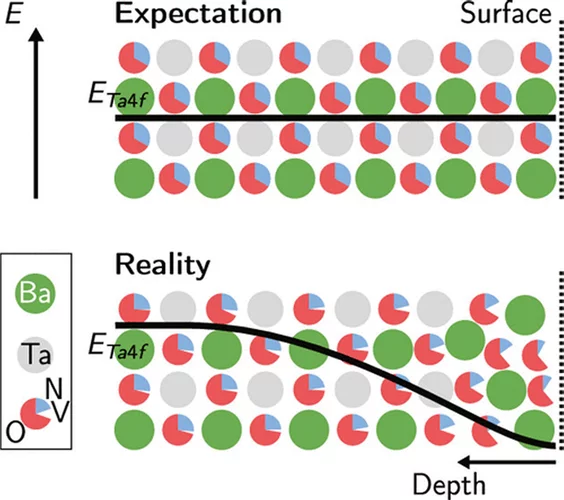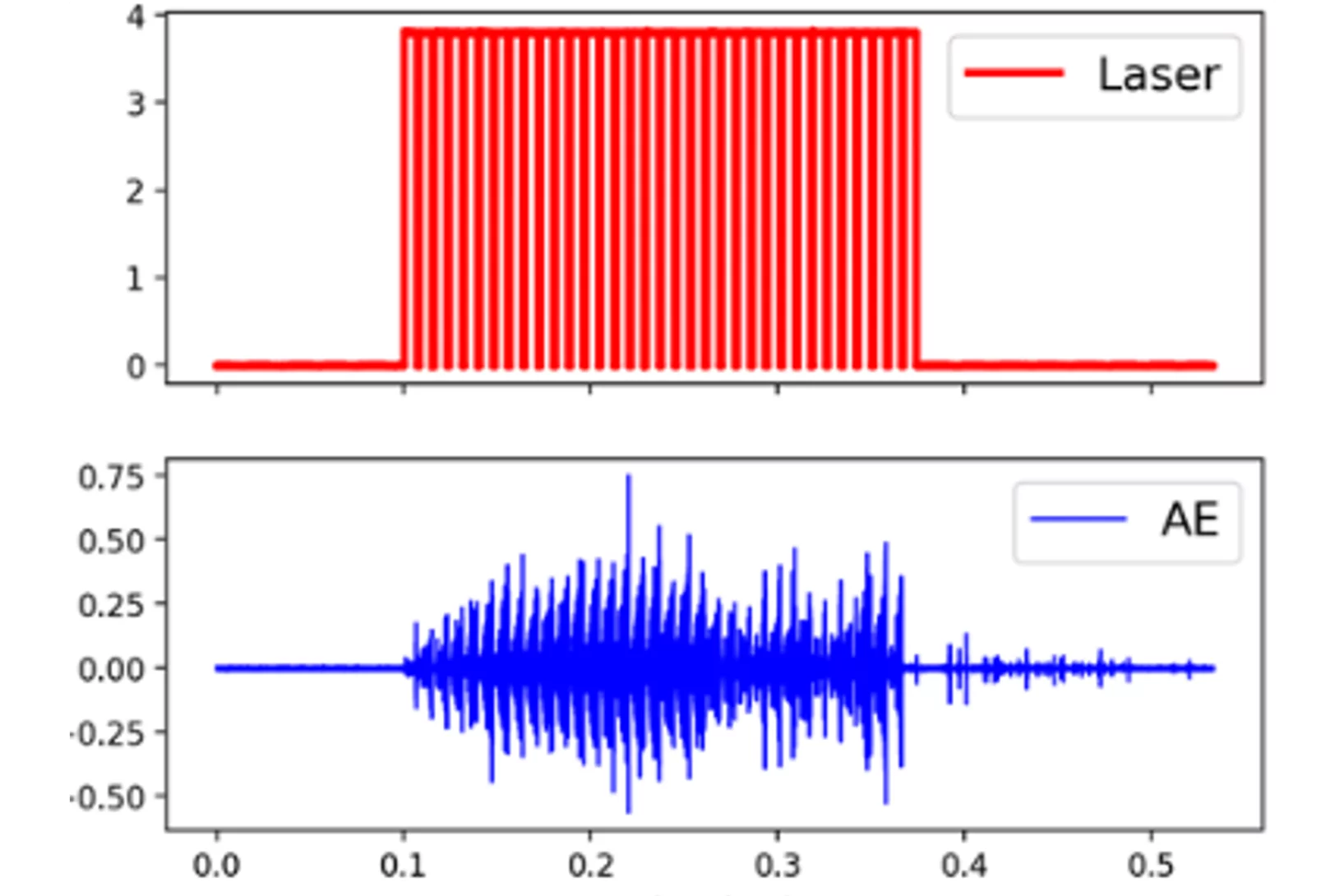Show filters
«Dans la recherche quantique, les coopérations sont tout à fait cruciales»
Kirsten Moselund, chercheuse au PSI, évoque pour nous les technologies quantiques, notamment leur importance et l’état actuel de la recherche en Suisse. Elle nous parle également de ses propres recherches dans le domaine de la nanophotonique.
Un laser dessine des paysages magnétiques sur mesure
Des scientifiques du PSI ont découvert une méthode étonnamment rapide et bon marché pour modifier localement des matériaux magnétiques.
Two-dimensional gradients in magnetic properties created with direct-write laser annealing
Across the fields of magnetism, microelectronics, optics, and others, engineered local variations in material properties can yield groundbreaking functionalities that play a crucial role in enabling future technologies. One-dimensional lateral gradients in material properties give rise to a plethora of new effects in thin-film magnetic systems. However, extending such gradient-induced behaviors to two dimensions has been challenging to realize experimentally. Here, we demonstrate the creation of two-dimensional complex patterns with continuous variations in magnetic anisotropy, interlayer exchange coupling, and ferrimagnetic compensation at the mesoscopic scale in numerous application-relevant magnetic materials. We exploit our engineered gradients in material properties to demonstrate novel magnetic functionalities, including the creation of a spin wave band pass filter and an architecture for passively resetting the position of a magnetic domain wall. Our results highlight the exciting new physics and device applications enabled by two-dimensional gradients in thin film properties.
Grâce aux rayons X, la cartographie cérébrale à haute résolution est à portée de main
Une nouvelle percée dans l’imagerie pourrait révéler la connectivité du cerveau avec un niveau de détail en 3D jamais atteint auparavant.
Inauguration du centre de transfert de technologie Swiss PIC
Fondé conjointement par des scientifiques du PSI et par des partenaires de la recherche et de l’industrie, le Swiss Photonics Integration Center Swiss PIC a été solennellement inauguré le 24 novembre 2025.
Atomes sous pression
En mettant la matière sous pression, Zurab Guguchia génère des phénomènes quantiques passionnants, notamment la supraconductivité à des températures facilement atteignables.
Unravelling the coexistence of insulating and metallic-like excitations in SrIrO₃
A team led by researchers from the Paul Scherrer Institute PSI used resonant inelastic X-ray scattering to probe spin and charge fluctuations in atomically engineered SrIrO₃. The results revealed that insulator-like and metallic-like modes can simultaneously emerge in a correlated 5d semimetal, advancing the understanding of “strange metal” behaviour in spin–orbit coupled systems.
From Melt to Martensite
Real-time synchrotron X-ray diffraction reveals how different phases of steel emerge and evolve under the intense heat of laser powder bed fusion.
Duo de terbium et autres œuvres d’art quantiques
Pour créer des bits quantiques plus stables, les scientifiques du PSI associent des ions terbium par paires. Ailleurs, ils positionnent des atomes avec précision à l’aide de pinces optiques.
Single-Photon-Counting Detection for Soft X-rays Down to 530 eV
The PSI Photon Science Detector Group has developed the first single-photon-counting pixel detector capable of detecting soft X-rays down to 530 eV. This breakthrough was achieved by combining EIGER readout chips with novel inverse LGAD sensors, developed in collaboration with and fabricated at Fondazione Bruno Kessler (Italy). The detector is now in user operation for ptychographic applications, where it has already enabled significant scientific results at the Fe L₃-edge (707 eV) and even at the O K-edge (530 eV), demonstrating superior detection performance compared to commercially available state-of-the-art detectors.
Freiner le temps et piéger les ions
Cornelius Hempel modélise des phénomènes quantiques avec des quanta. Cela semble logique, mais c’est extrêmement complexe. Son dernier coup d’éclat: un simulateur quantique qui ralentit le temps.
Disorder begins at the surface of quantum materials
Ultrafast X-rays from SwissFEL reveal unexpected light responses in quantum materials.
Tuning chirality amplitude at ultrafast timescales in chiral CsCuCl3
We quantify “how chiral” a crystal is, and demonstrate its tunability at ultrafast timescales. This achievement does open up a new direction in chirality-related condensed matter physics and on emergent phenomena, which have both attracted significant attention recently.
Merlin-7: un nouveau modèle pour le calcul intensif
Au PSI, un cluster de calcul innovant ouvre une ère nouvelle dans la recherche assistée par ordinateur.
Au PSI, un homme qui murmure à l’oreille du ciment
John Provis a dédié sa vie de chercheur à un matériau de construction qui s’avère plus passionnant qu’il n’en a l’air.
Aperiodic Chiral Tiling by Molecular Self-Assembly
The 2D self-arrangement of a molecule that resembles three-armed spirals leads to a triangular pattern that is effectively aperiodic.
Machine Learning Accelerates Alloy Design for Additive Manufacturing
A new machine learning–designed alloy demonstrates how materials can be tailored for specific performance properties required in additive manufacturing.
The Quantum Revolution: What's Next?
A century on from the birth of quantum mechanics, 2025 marks the UNESCO International Year of Quantum Science and Technology. What does the future hold? Our experts share their opinions.
Du zinc détecté dans des seringues obstruées
Pour l'entreprise pharmaceutique MSD, ANAXAM a étudié, avec l'aide de scientifiques du PSI, si le zinc pouvait contribuer à l'obstruction des seringues préremplies.
Demystifying electron ptychography with the PtychoScopy tool
The open-source PtychoScopy tool guides users towards higher quality and faster electron ptychographic reconstructions.
Peering into matter with ultrashort X-ray ripples
An all-X-ray transient grating experiment allows scientists to study the dynamics of quantum particles at the nanoscale.
Cracking the Challenge of Steel–Copper Fusion
Why do cracks appear when joining steel and copper? We track the mechanisms in real time to find out.
Conseil en technologie de pointe
Stephanie Smit, ancienne doctorante au PSI, travaille comme ingénieur-conseil en propriété industrielle pour une société qui compte parmi les plus importantes au monde. Celle-ci construit en effet des machines qui valent une fortune et sont très recherchées.
Transmutex im PSI Hotlabor
Transmutex entwickelt Hard- und Software für einen beschleunigergetriebenen Reaktor, der langlebige Transurane und Spaltprodukte aus dem klassischen Uranzyklus für die Stromerzeugung umwandeln kann.
Dadurch werden Vorteile wie eine Reduzierung des Atommüllvolumens um mehr als das Sechsfache und eine Verkürzung der HAW-Lebensdauer auf << 1000 Jahre erzielt.
Das Brüten von U-233 in Th-Brennstoff im Reaktor verbindet das Design von Transmutex mit bestehenden, kommerziellen PHWR- und LWR-Reaktoren, indem es Brennstoff und spaltbares Material für deren weiteren Betrieb liefert.
Im PSI-Hotlabor entwickelt Transmutex die Herstellung poröser Metall-Pellets mit dem Ziel, experimentelle Th-Pellets für weitere Untersuchungen unter Nutzung der Forschungskapazitäten des PSI und des Hotlabors herzustellen. Das neue Design vereint die Vorteile von metallischem Brennstoff wie hohe Spaltbarkeit, einfache Herstellung und vieles mehr während es gleichzeitig klassische Probleme von kompaktem metallischem Brennstoff im Zusammenhang mit der Ansammlung von Spaltgas mindert.
Erfolgreich hergestellte Test-Pellets aus inaktiven Analogmaterialien belegen die Machbarkeit des Designs.
Interfacial Phase Formation in 316L–CuCrZr Hybrids
In-situ X-ray diffraction reveals how phase separation and fluid flow shape microstructure in laser-welded multi-material metal builds.
Phase by Phase: How Stainless Steel and IN625 Solidify Together
Where steel meets superalloy: real-time X-ray snapshots reveal how composition and cooling shape metal during 3D printing
Financement prestigieux pour des réseaux photoniques
Kirsten Moselund, chercheuse au PSI, s’est vu attribuer une importante subvention de recherche par le Conseil européen de la recherche (CER).
Steering magnetic textures with electric fields
Neutrons reveal a new way to control magnetism at the nanoscale
Stabilising fleeting quantum states with light
X-rays from SwissFEL probe emergent properties of quantum materials
Gold nanoparticle dynamics on graphene probed by convergent beam electron diffraction.
Dynamics of single Au nanoparticles on graphene were probed simultaneously in real- and diffraction space by time-series convergent beam electron diffraction.
Quand la science rencontre l’industrie, l’innovation a de l’impact
Hans Priem et Cees Maris de l’entreprise VDL ETG nous expliquent ce que signifie la fabrication avancée dans l’industrie et évoquent la collaboration avec le PSI.
Inauguration du centre d’excellence de l’ESA en Suisse
L’inauguration solennelle du Centre européen d’innovation en deep tech spatiale (ESDI) a réuni des invités de haut vol.
Décrypter les radiations
Les radiations vues du ciel: un détecteur sensible et un algorithme intelligent rendent visible le rayonnement radioactif.
Plus rapide, précise et fiable: la production et son avenir
Le terme de fabrication avancée désigne des méthodes de fabrication ultramodernes. Les scientifiques du PSI améliorent la fiabilité de ces technologies, comme l’impression 3D, et continuent de faire progresser la miniaturisation de puces à haute performance.
Correcting quantum errors with neutral-atom architectures
Wenchao Xu talks about the benefits and challenges of building quantum computers from neutral atoms.
L’aluminium devient visible
Des scientifiques du PSI ont réussi une première: déterminer précisément la position des atomes d’aluminium dans des zéolithes, qui font de ces matériaux des catalyseurs si performants.
Nanostructure orientation in 3D with visible light by Tomographic Müller-Polarimetric Microscopy
We developed a new method, tomographic Müller-polarimetric microscopy (TMPM), that allows to retrieve at three-dimensional microscopic resolution the nanoscale structural information of the ultrastructure probed with polarized light in a non-destructive manner using a low cost and experimentally simple optical setup.
Antiferrodistortive and ferroeletric phase transitions in freestanding films of SrTiO3
Epitaxially grown thin films are commonly used to strain engineer electronic properties by the choice of a substrate, and therefore do not match bulk properties (leading to properties that deviate from the bulk material). Free standing ultrathin oxide films are expected to preserve the bulk-like properties due to the absence of substrate influence. However, we show that this expectation is not fulfilled with ultrathin free standing SrTiO3, as they get ferroelectric at 80K.
Rethinking 3D Printing for ceramics
Using a powerful combination of in-situ X-ray imaging and high-fidelity simulations, researchers uncover how alumina behaves under laser-based 3D printing—paving the way for more reliable ceramic additive manufacturing.
A new dimension of complexity for layered magnetic materials
X-rays reveal magnetic phenomena driven by interactions between the layers of a kagome ferromagnet
Un simulateur quantique unique en son genre ouvre la porte à de nouvelles recherches
Des physiciens du PSI et de Google ont construit un simulateur quantique numérique-analogique innovant.
Texture and residual stress evolution during 3D printing
Discover how advanced neutron diffraction sheds light on the evolution of stress and texture in 3D-printed duplex stainless steel.
«Le plus grand défi est le manque d'acceptation des éoliennes»
Russell McKenna, expert dans l’analyse des systèmes énergétiques, explique à ETH-News quelles sont, selon lui, les mesures les plus importantes à prendre pour développer l’énergie éolienne.
Mitigating Cracks in Multi-Material Printing
Integrating metallic powders with thin foils in laser powder bed fusion can reduce interfacial cracks and improve microstructure quality in titanium-aluminum multi-material printing.
Mapping the Nanoscale Architecture of Functional Materials
A new X-ray technique reveals the 3D orientation of ordered material structures at the nanoscale, allowing new insights into material functionality.
New widgets and extensions expand the OSSCAR platform for educational notebooks in materials science
In a new article published in Computer Physics Communications, the team of the Open Software Services for Classrooms and Research project (OSSCAR) describes how to create custom widgets and extensions that can be used in interactive notebooks to teach computational materials science. The article also introduces two new entries in OSSCAR: a widget to display an interactive periodic table that allows users to group elements into different states, and one to plot and visualize electronic band structures and density of states.
Anionic Disorder and Its Impact on the Surface Electronic Structure of Oxynitride Photoactive Semiconductors
The conversion of solar energy into chemical energy, stored in the form of hydrogen, bears enormous potential as a sustainable fuel for powering emerging technologies. Photoactive oxynitrides are promising materials for splitting water into molecular oxygen and hydrogen. However, one of the issues limiting widespread commercial use of oxynitrides is degradation during operation. While recent studies have shown the loss of nitrogen, its relation to reduced efficiency has not been directly and systematically addressed with experiments. In this study, we demonstrate the impact of the anionic stoichiometry of BaTaOxNy on its electronic structure and functional properties. Through experimental ion scattering, electron microscopy, and photoelectron spectroscopy investigations, we determine the anionic composition ranging from the bulk toward the surface of BaTaOxNy thin films. This further serves as input for band structure computations modeling the substitutional disorder of the anion sites. Combining our experimental and computational approaches, we reveal the depth-dependent elemental composition of oxynitride films, resulting in downward band bending and the loss of semiconducting character toward the surface. Extending beyond idealized systems, we demonstrate the relation between the electronic properties of real oxynitride photoanodes and their performance, providing guidelines for engineering highly efficient photoelectrodes and photocatalysts for clean hydrogen production.
Acoustic emission signature of a martensitic transformation
Acoustic emission monitoring in 3D printing: real-time insights into martensitic phase transformations and crack formation.

